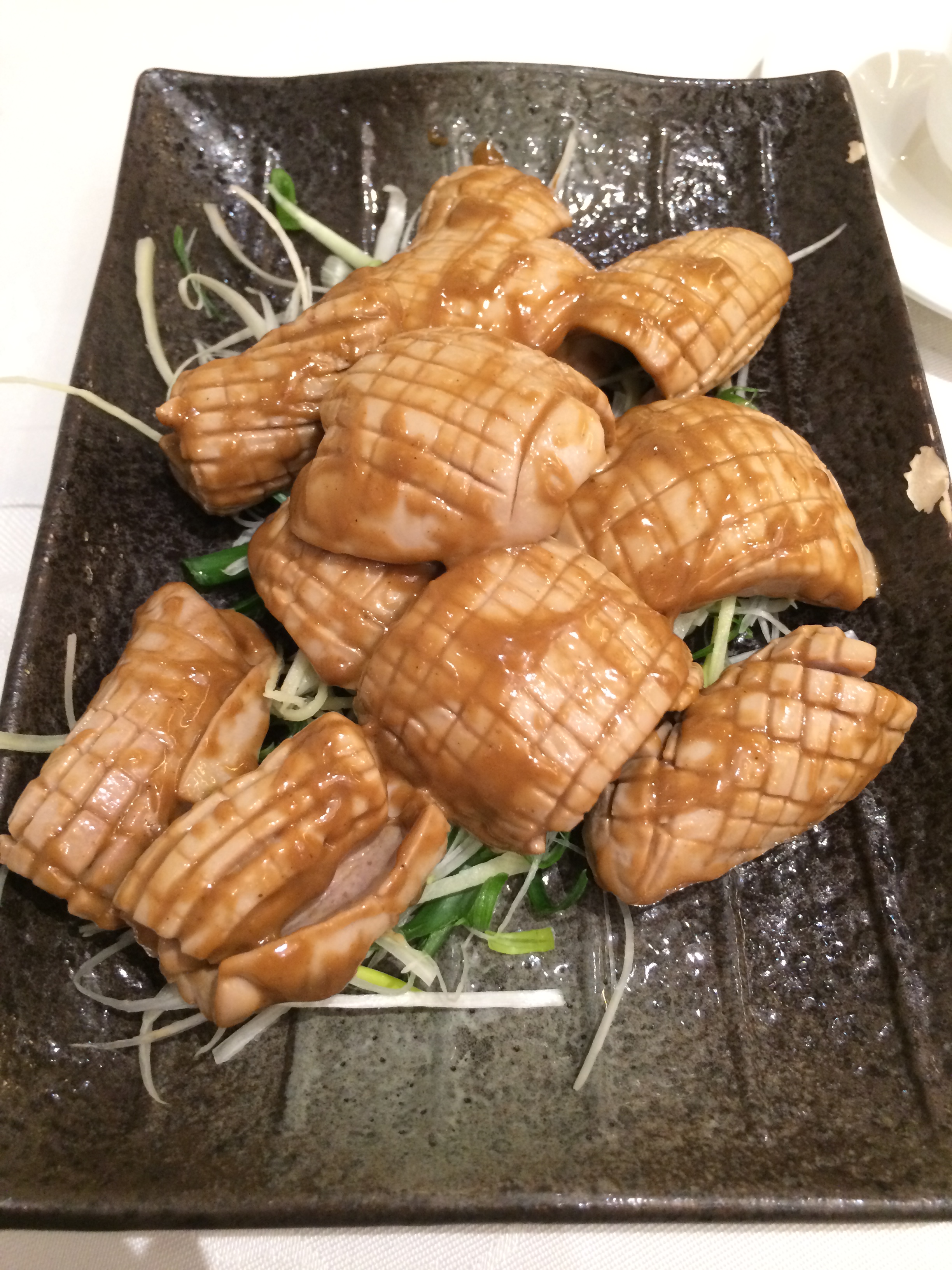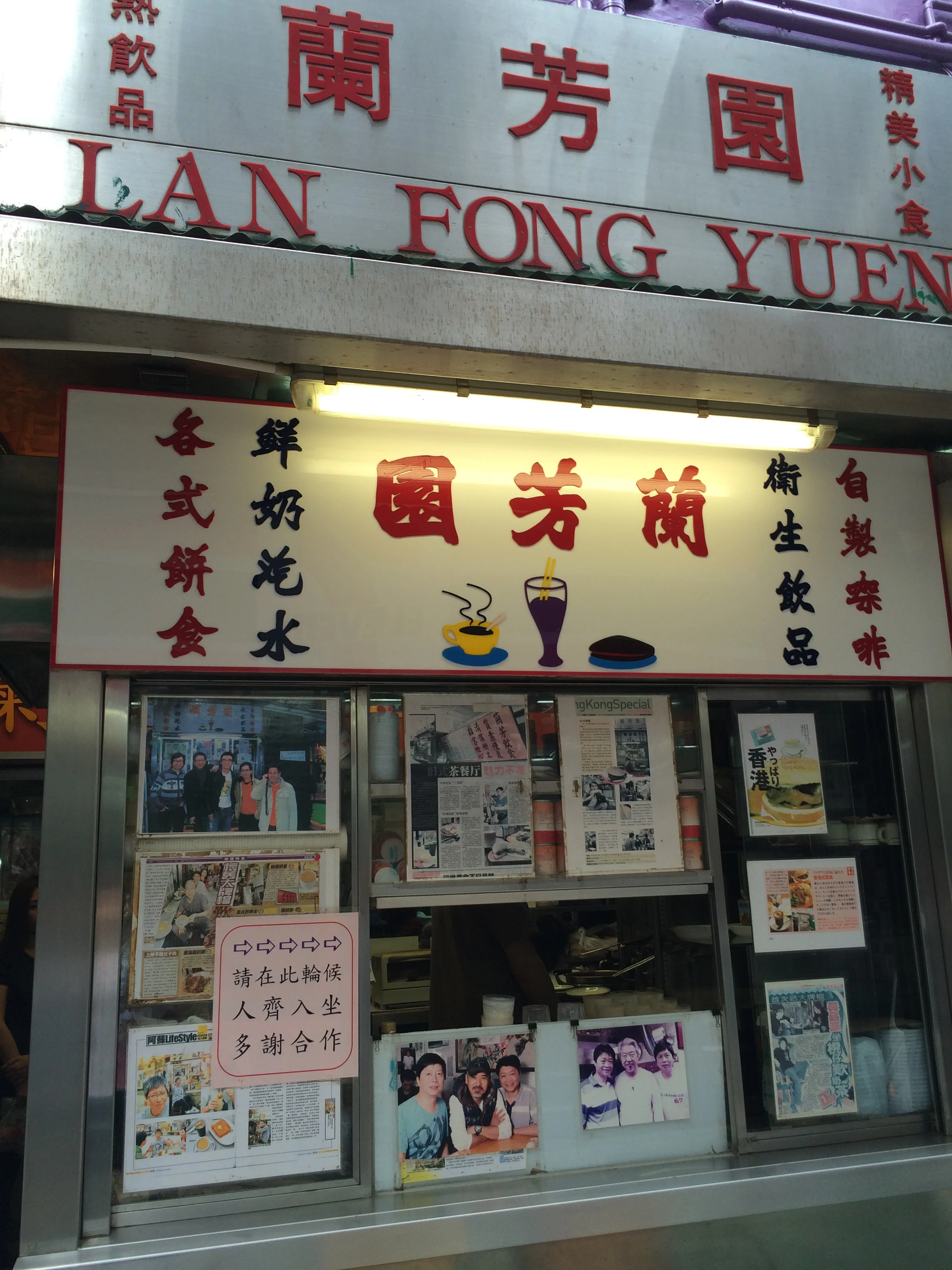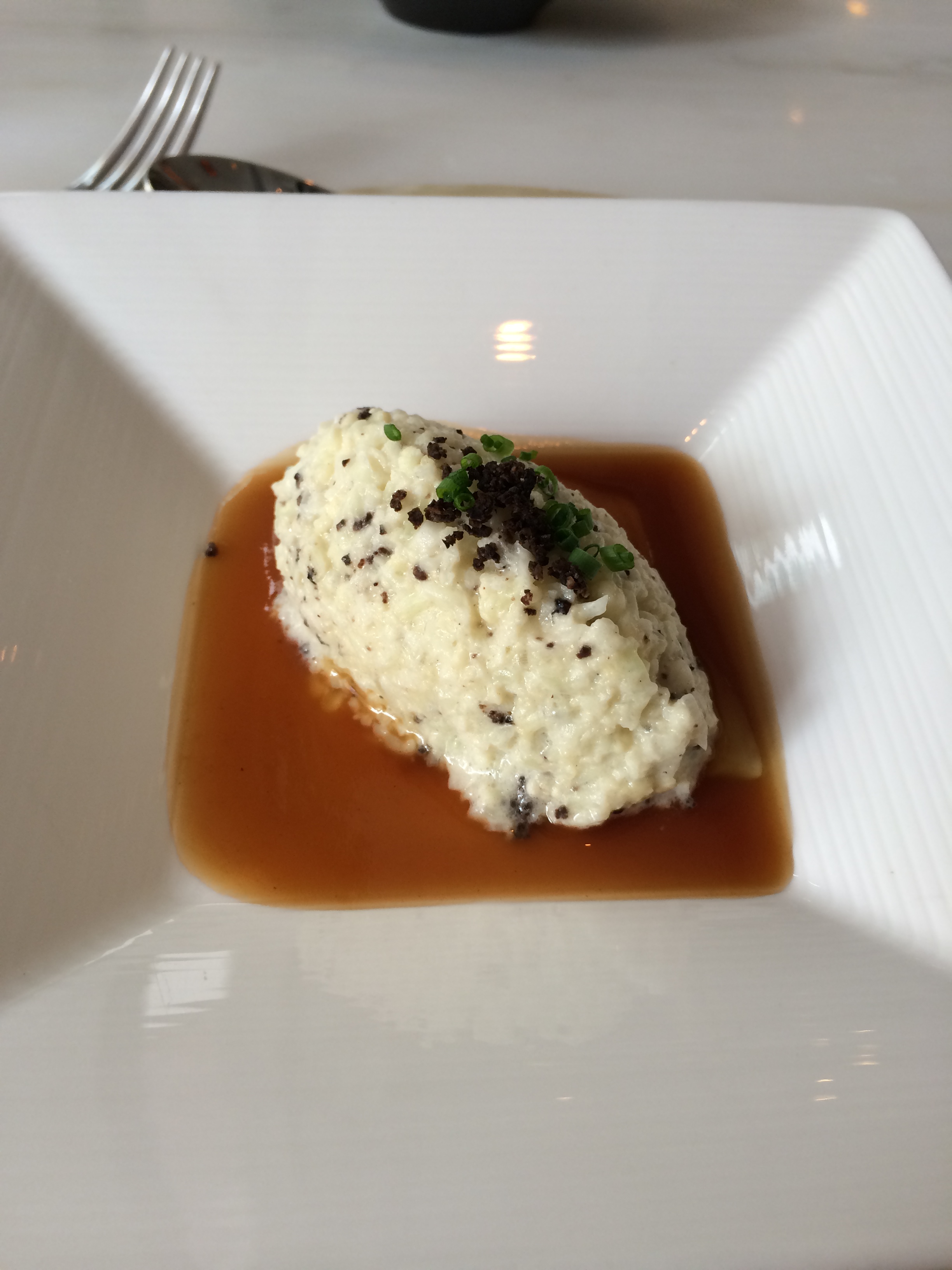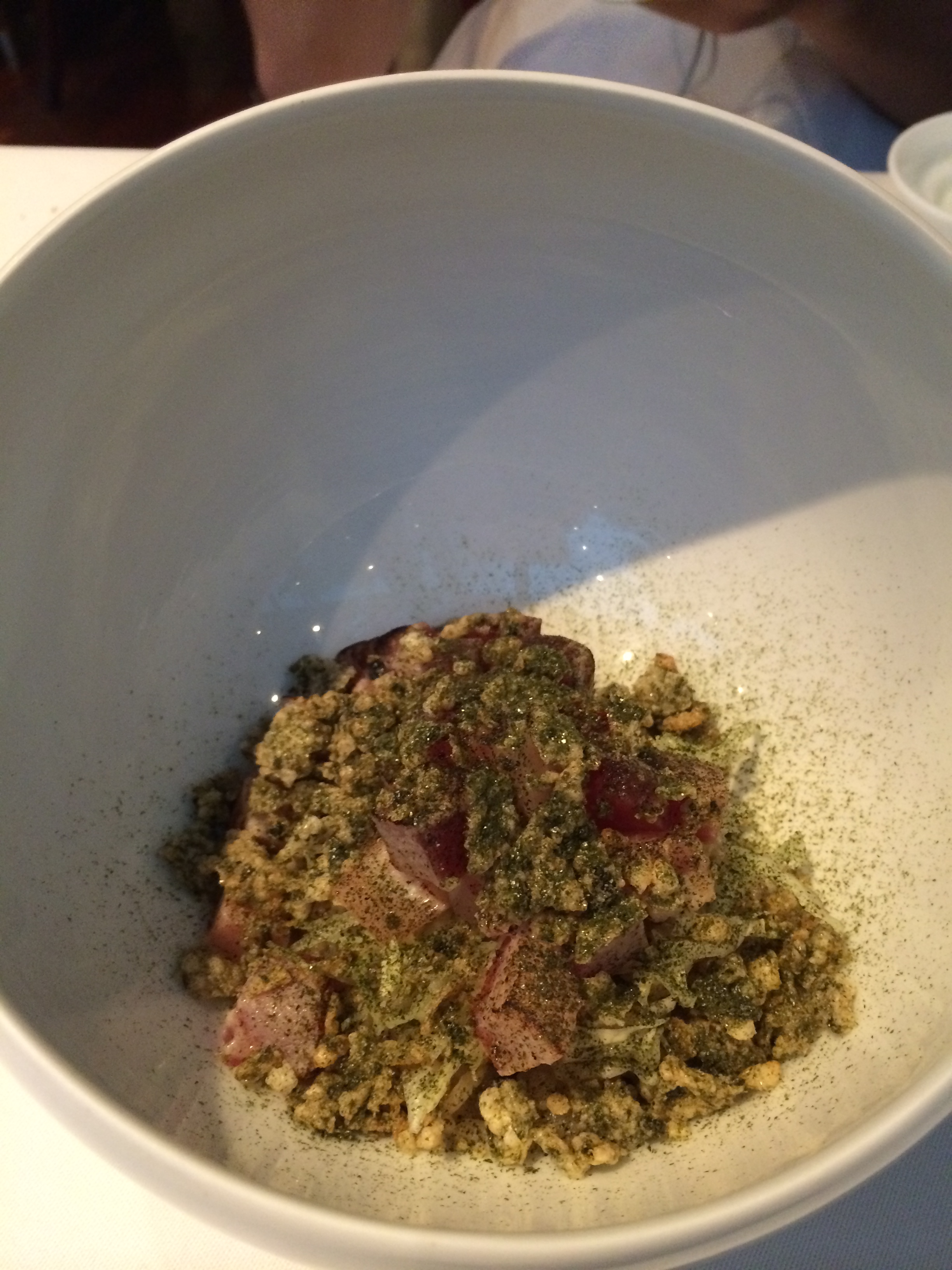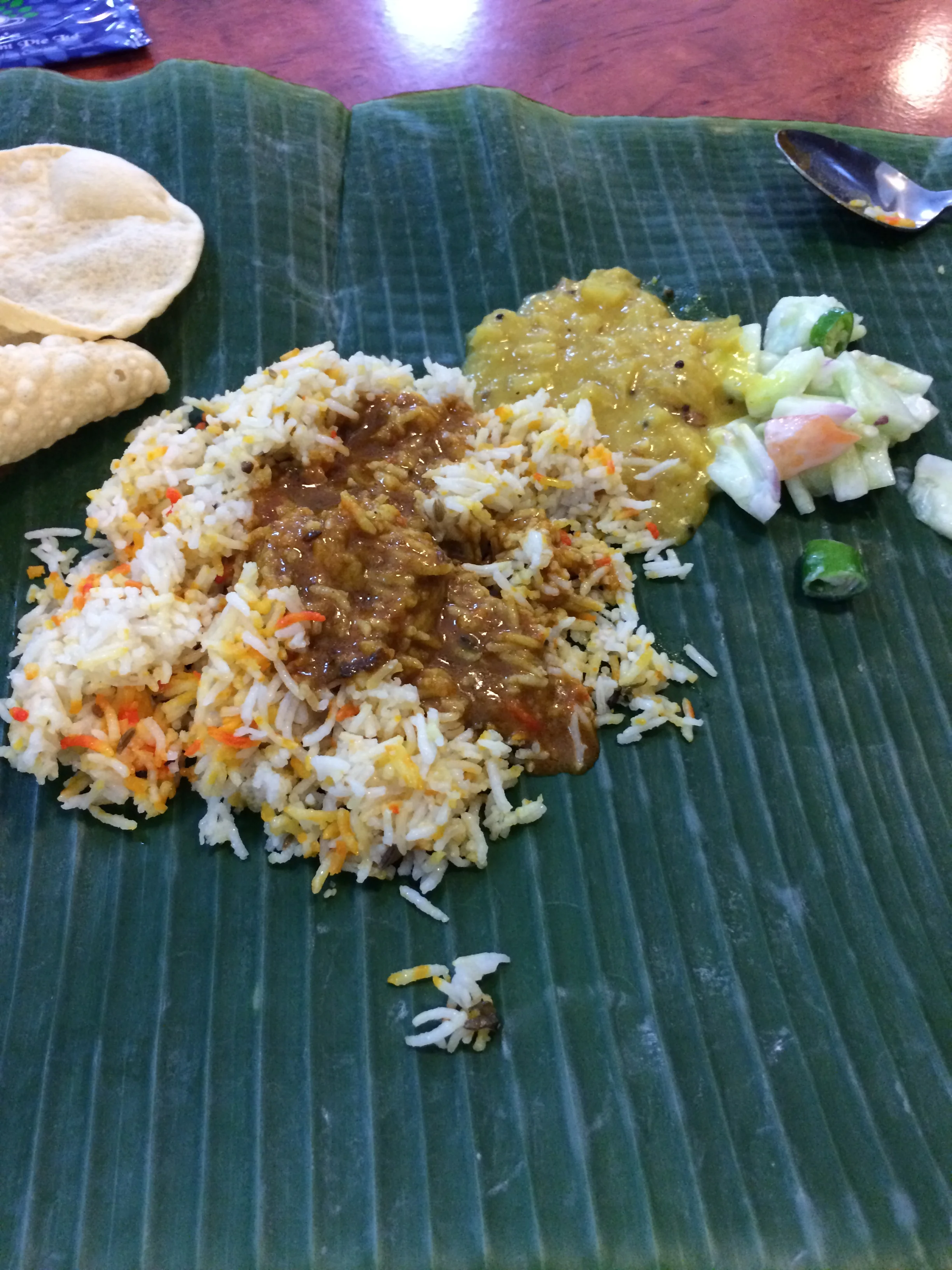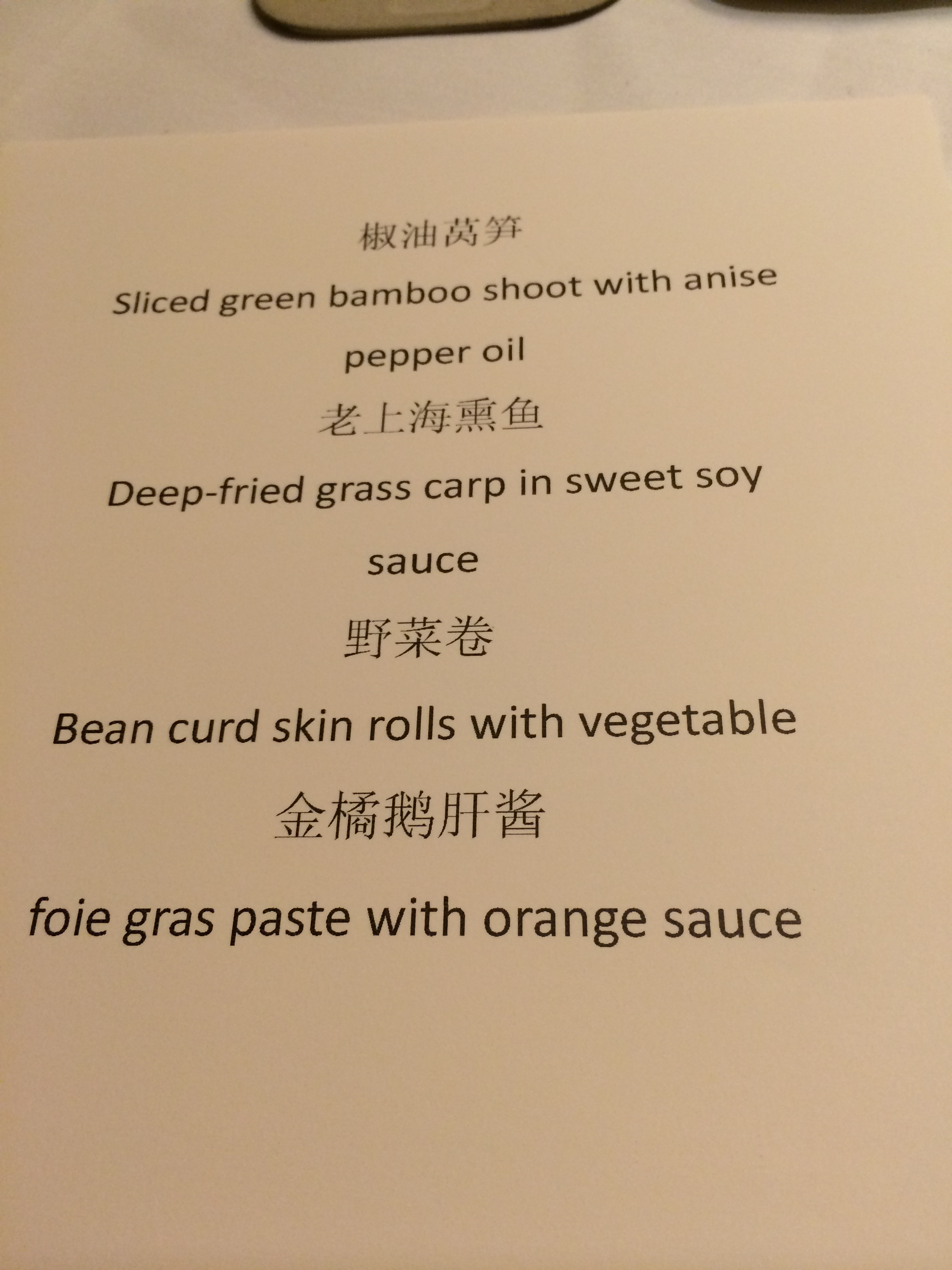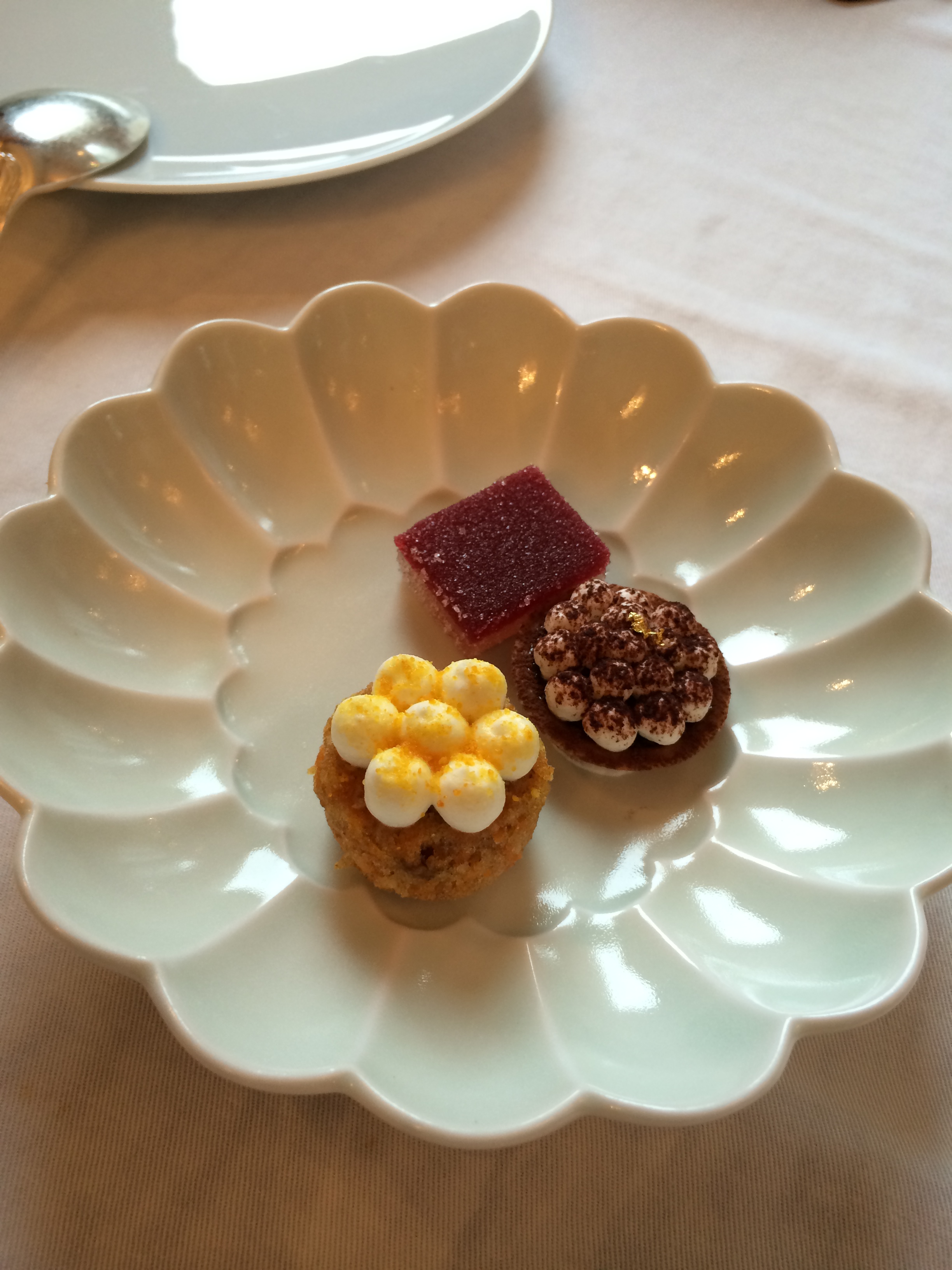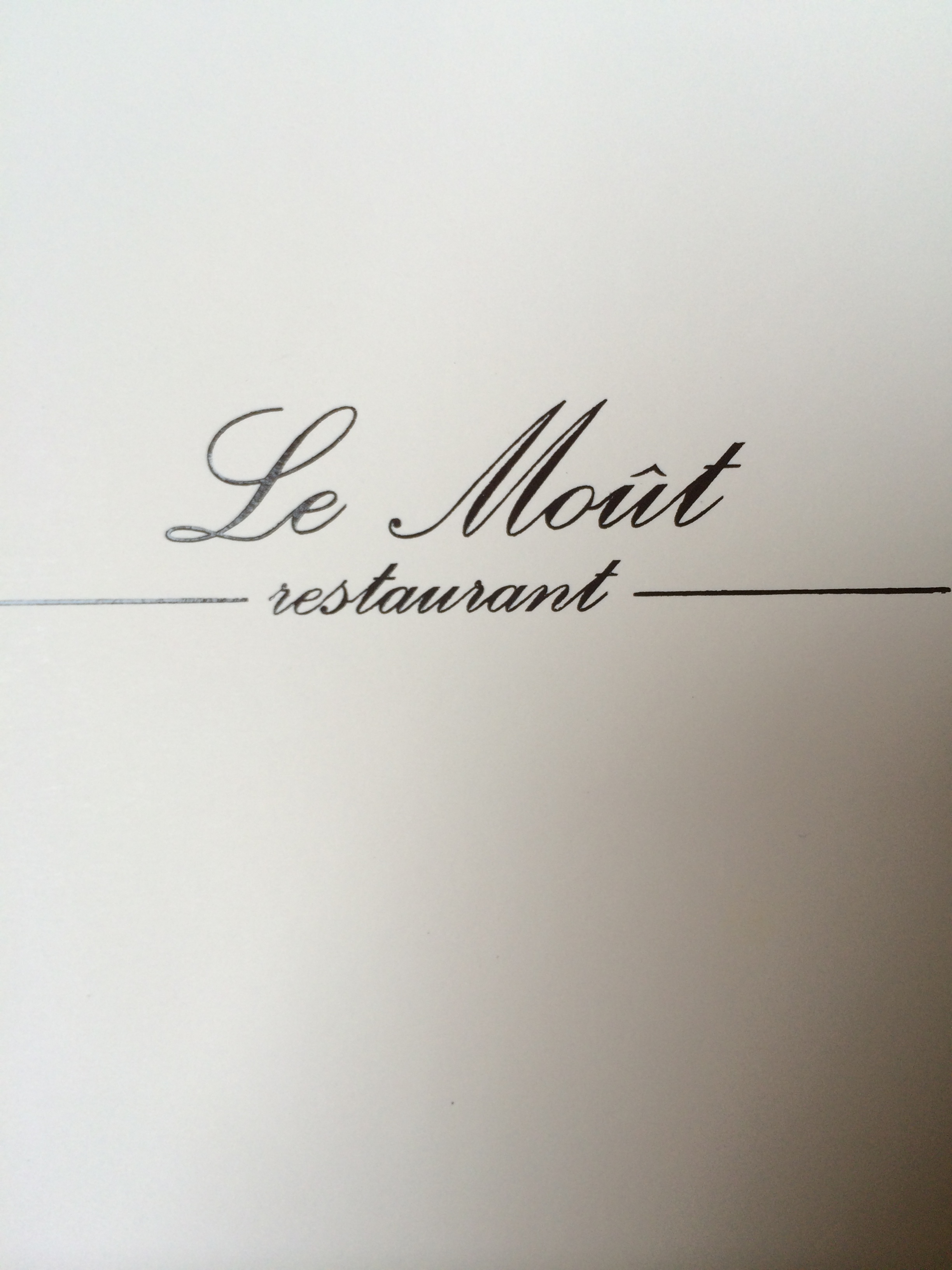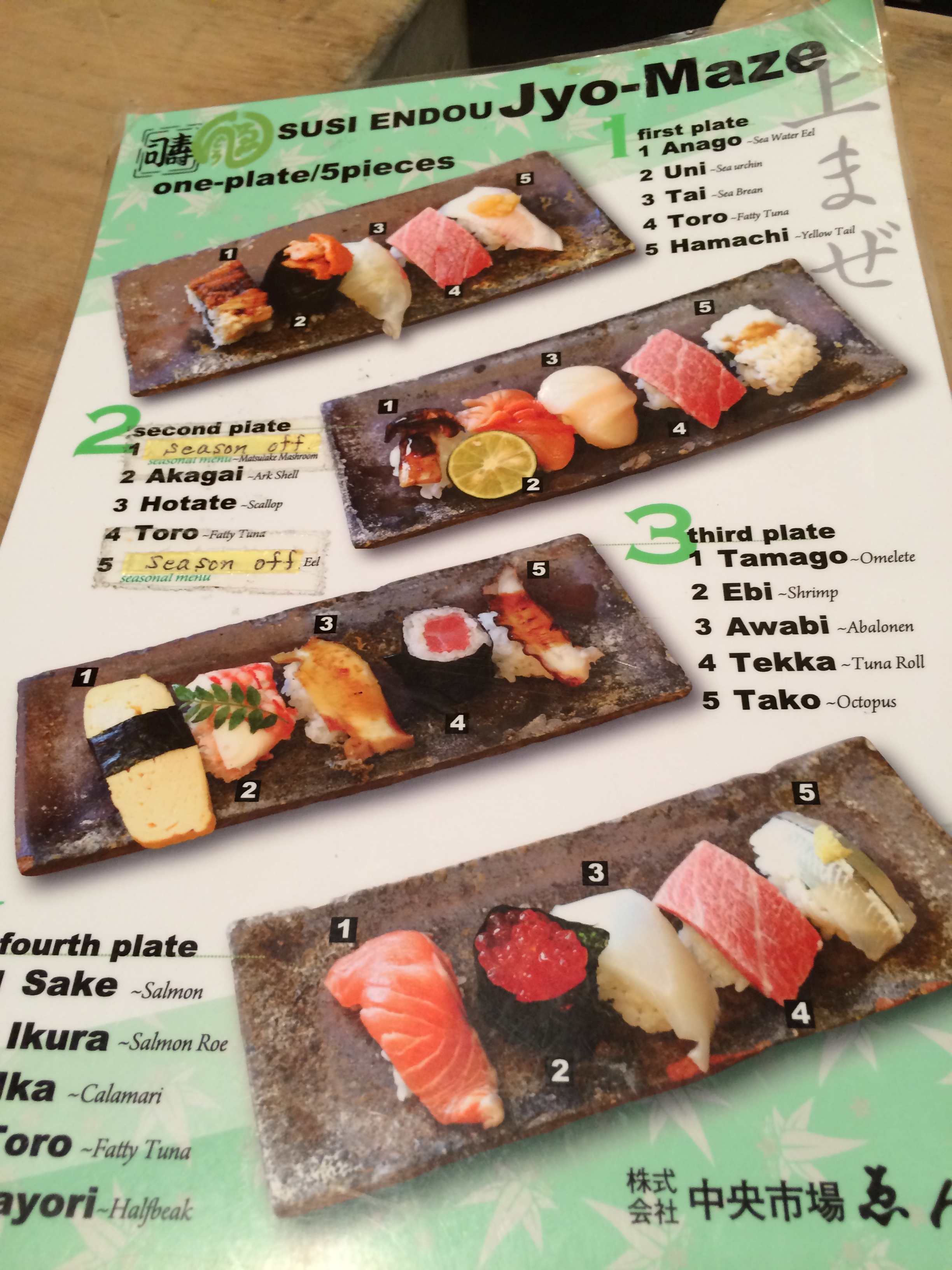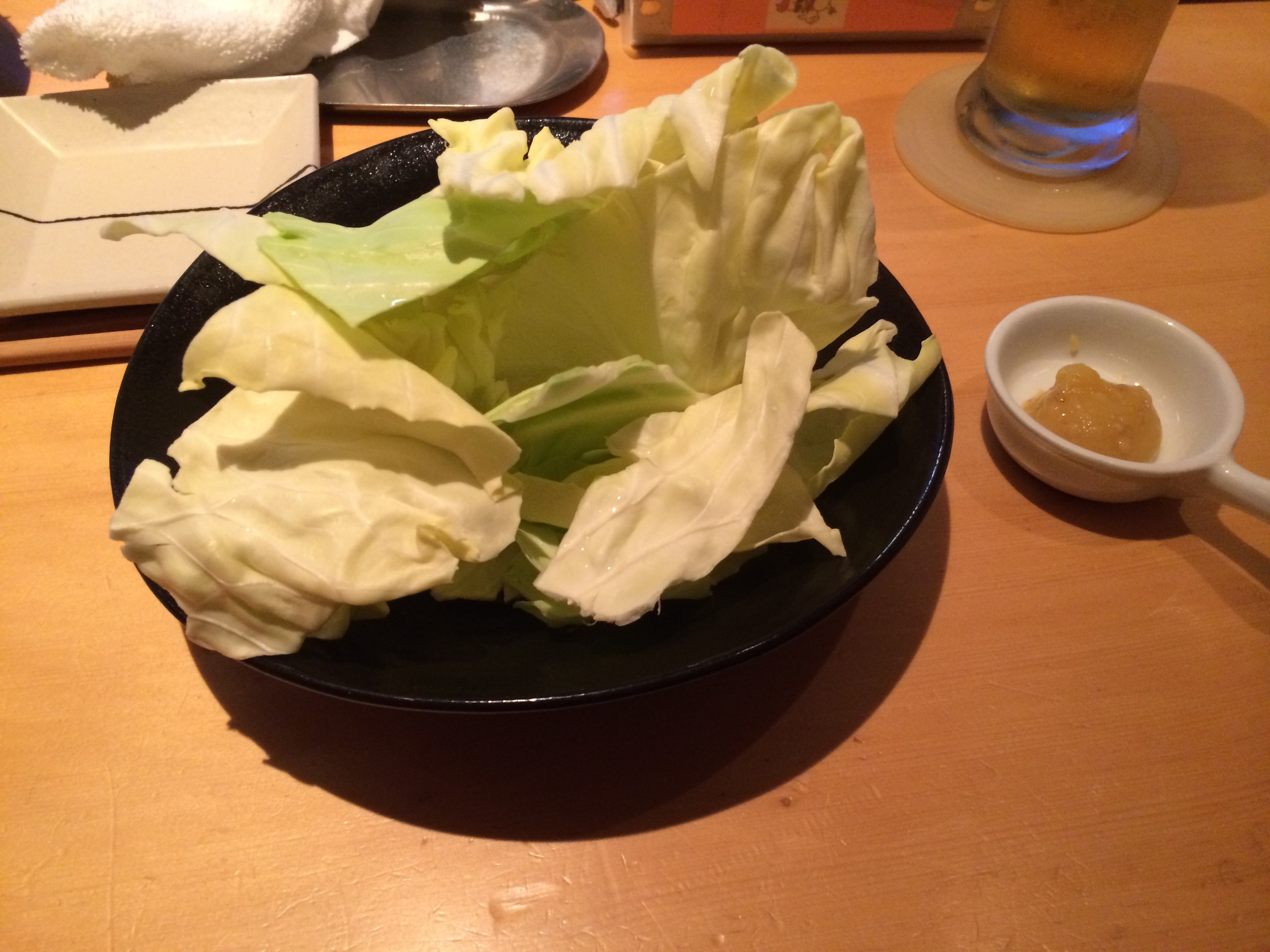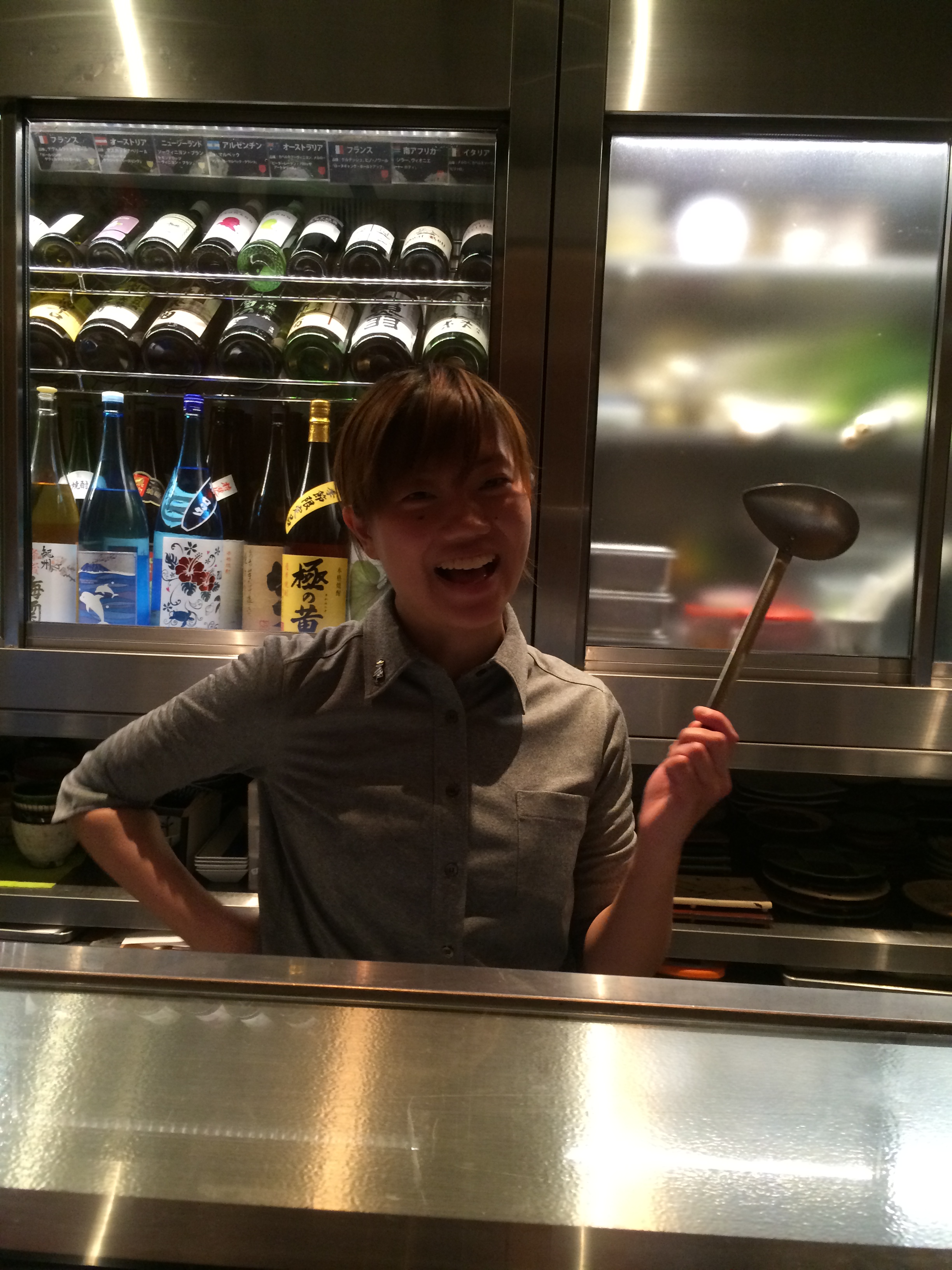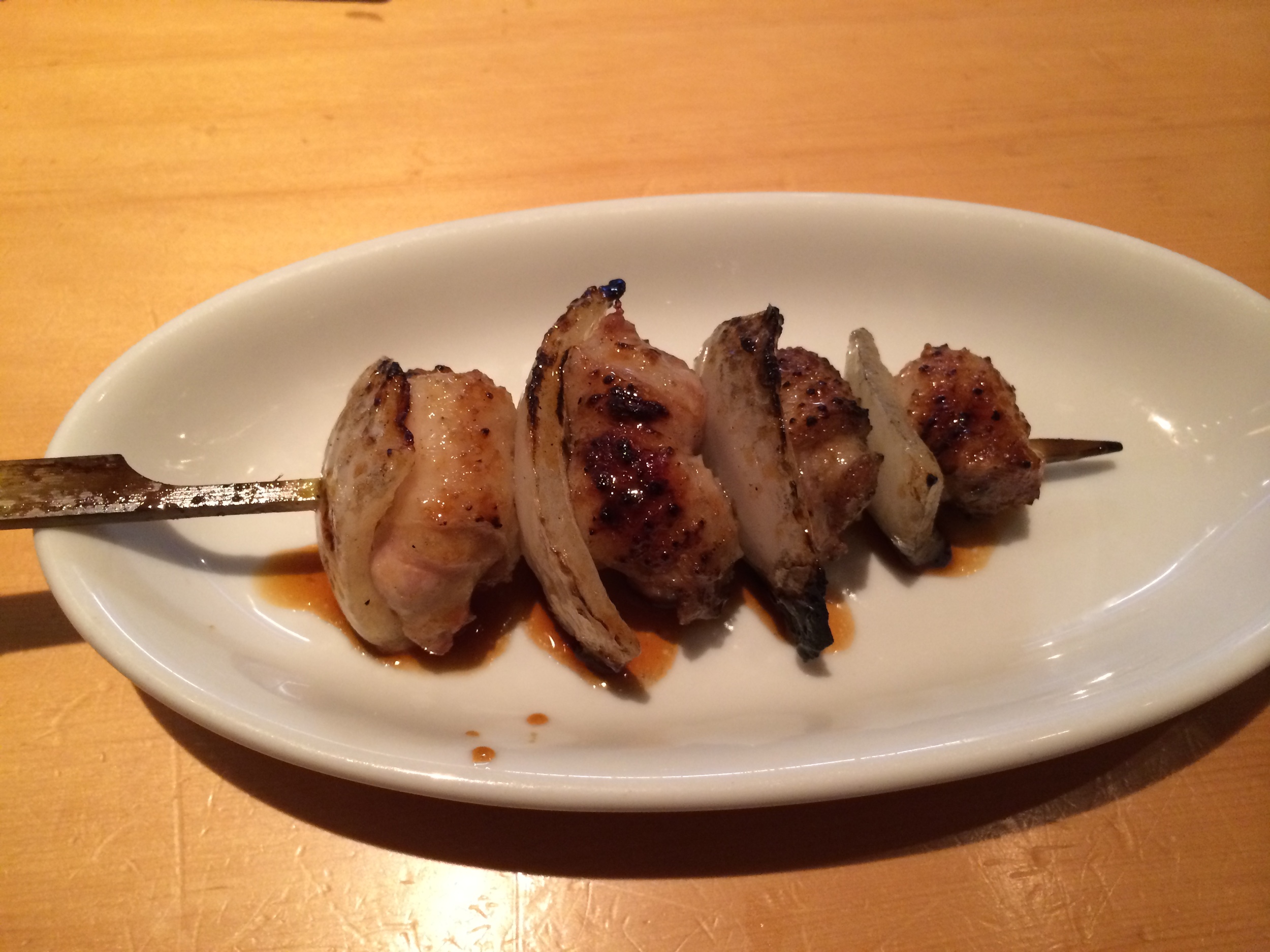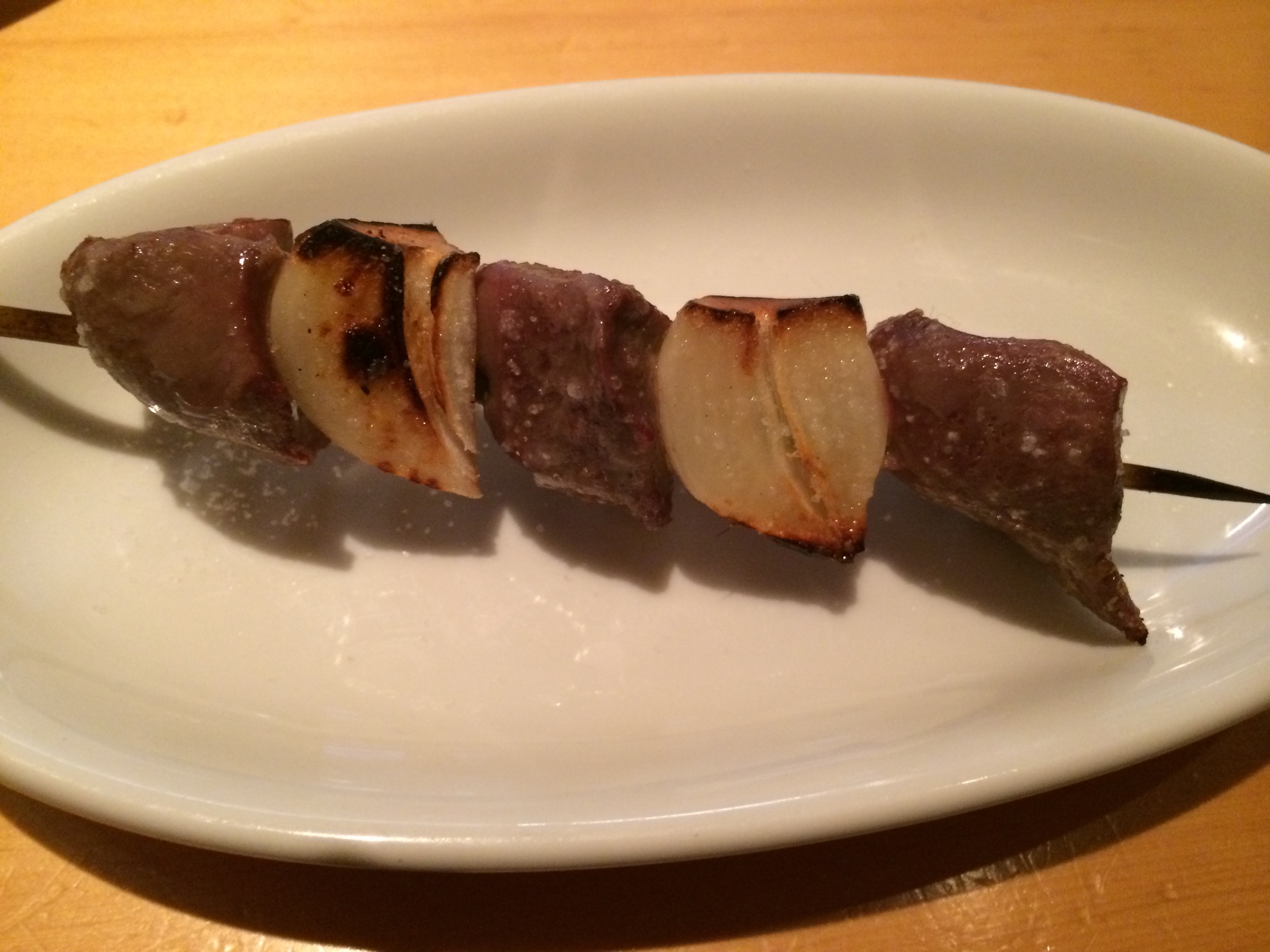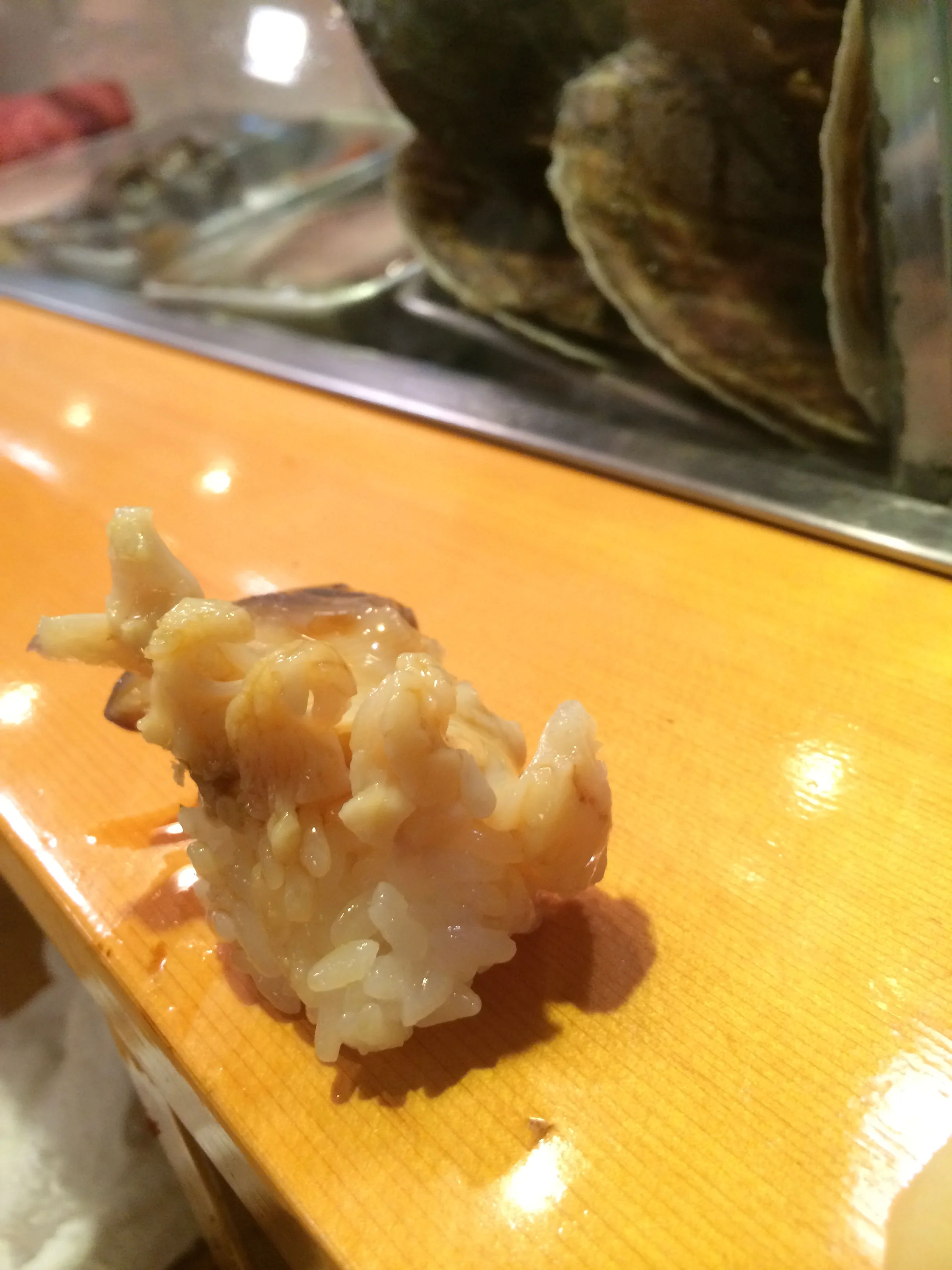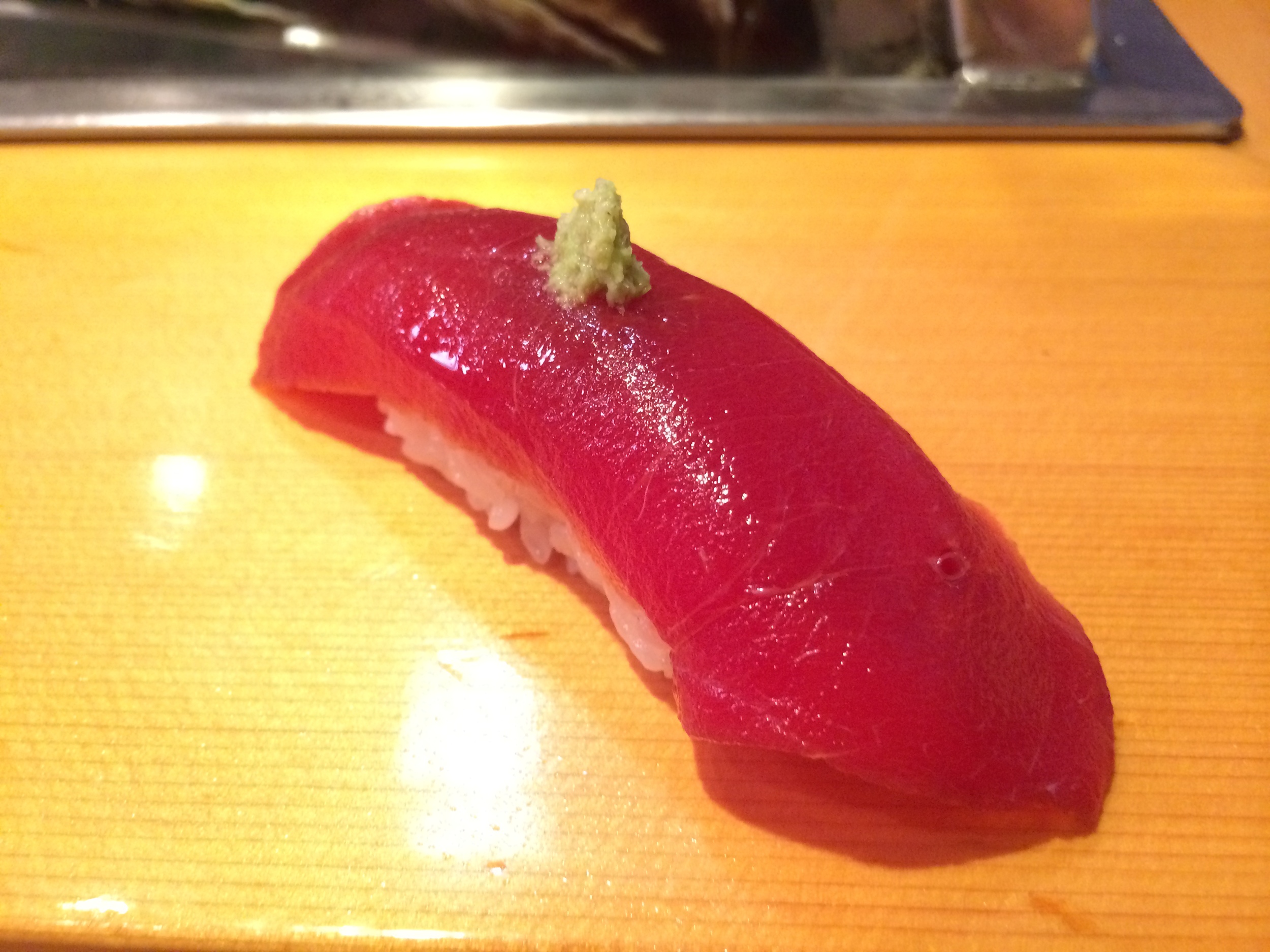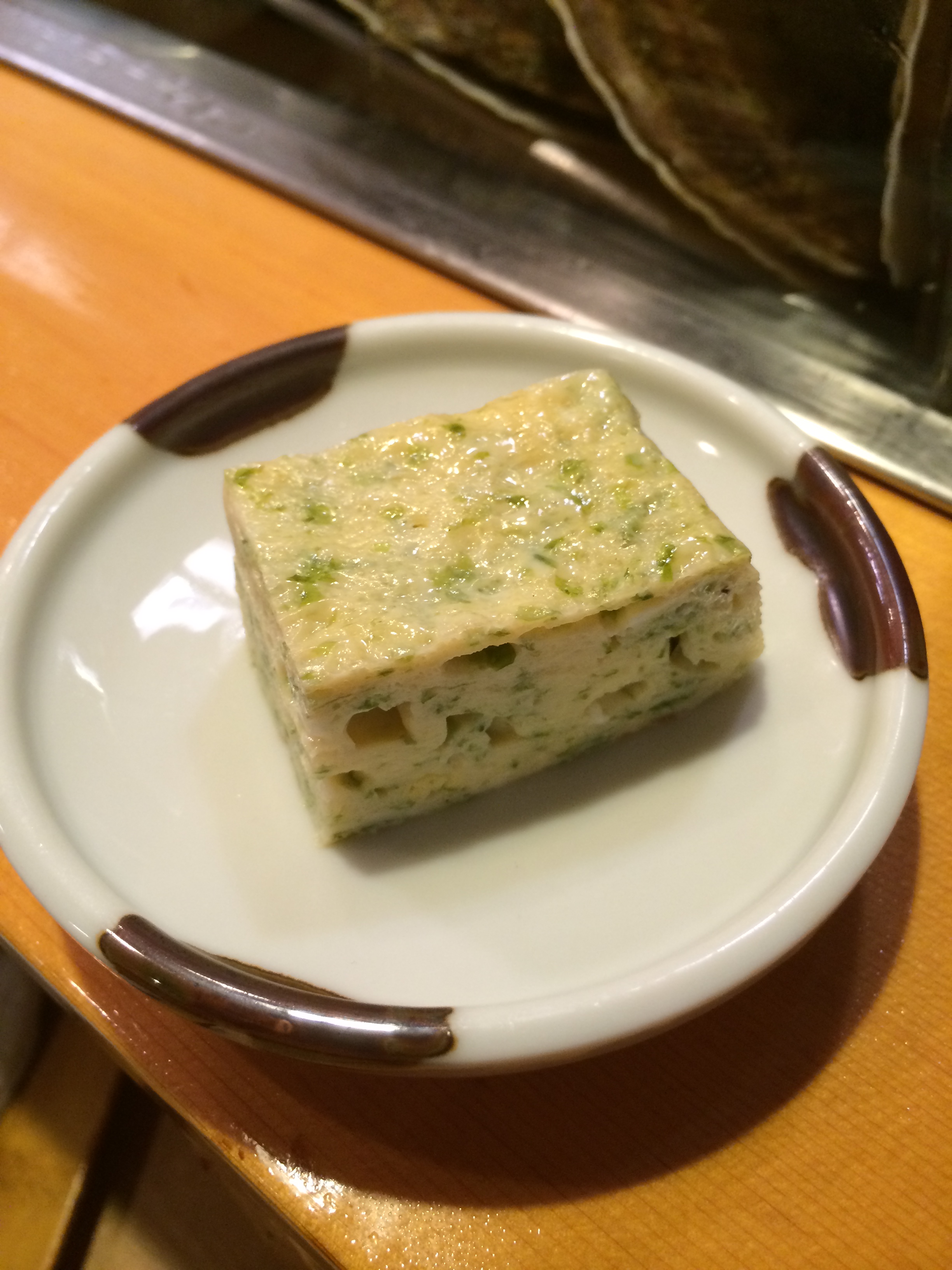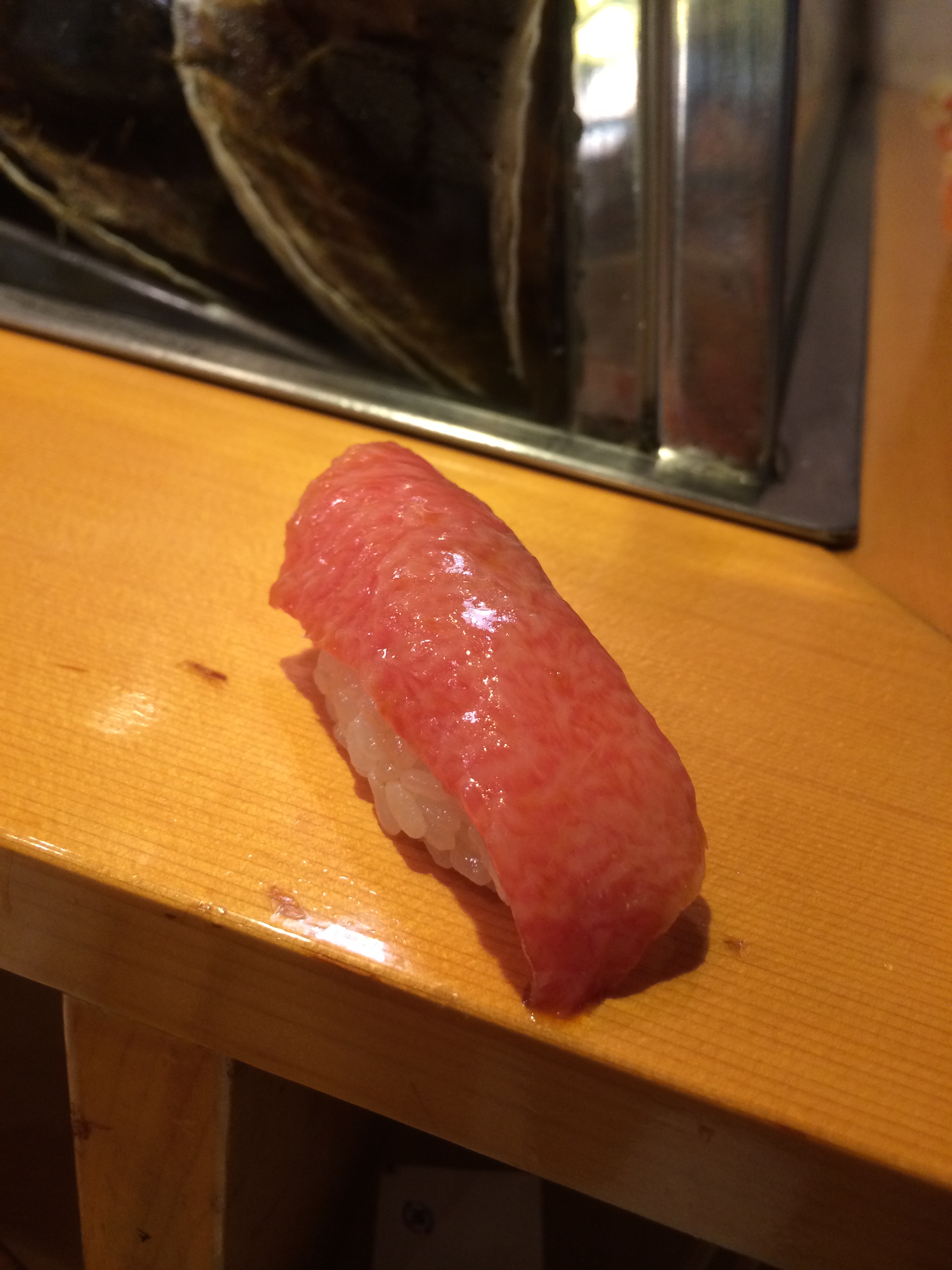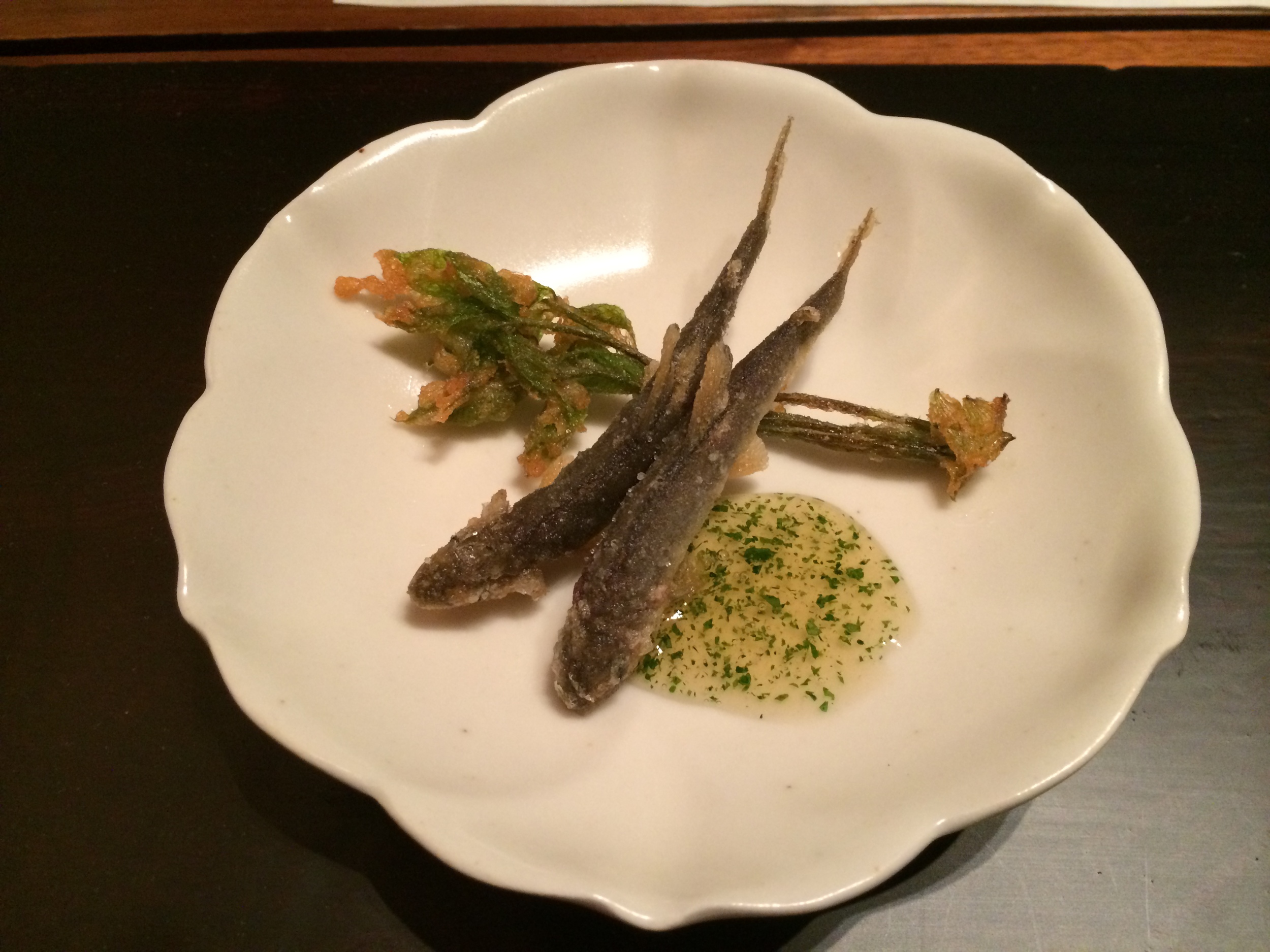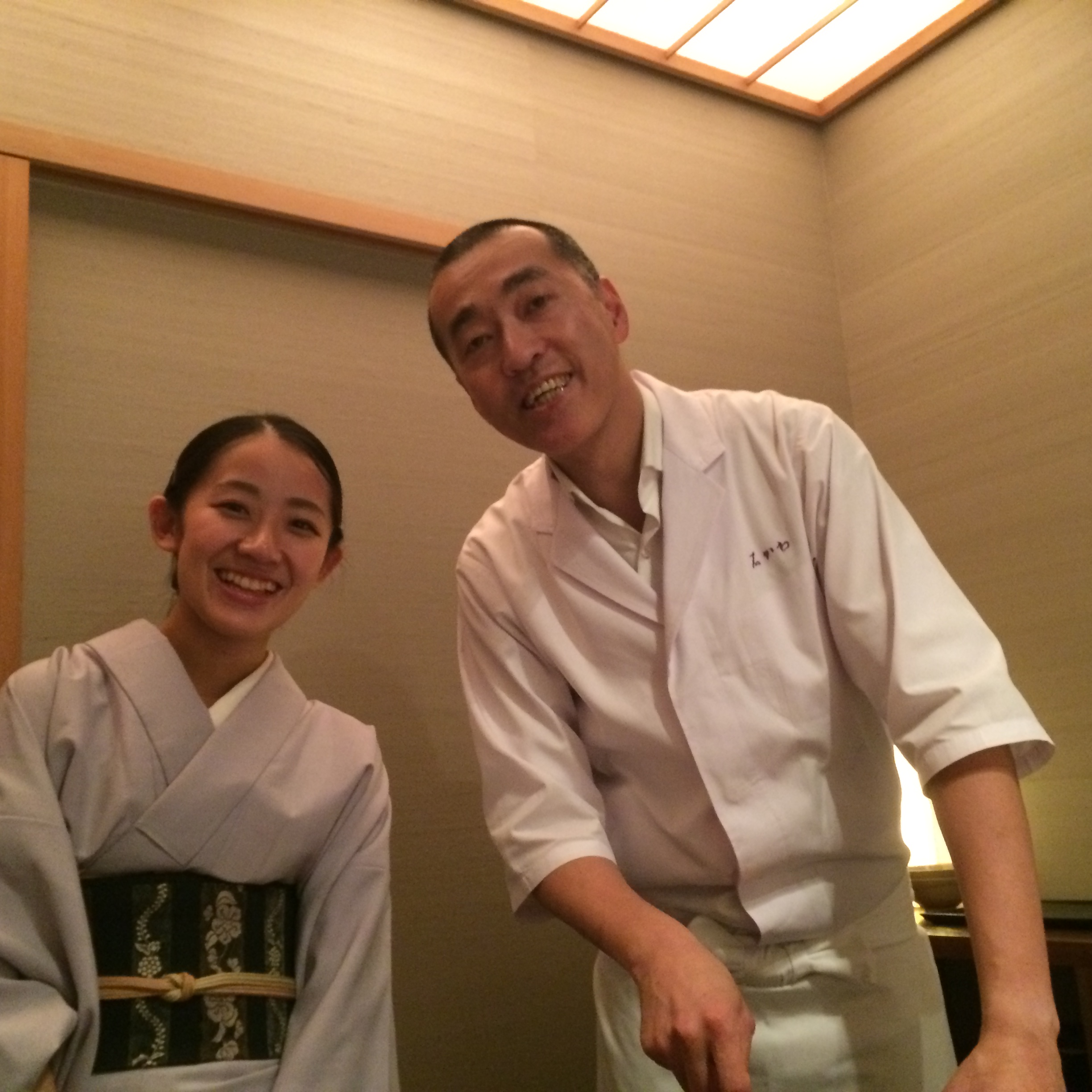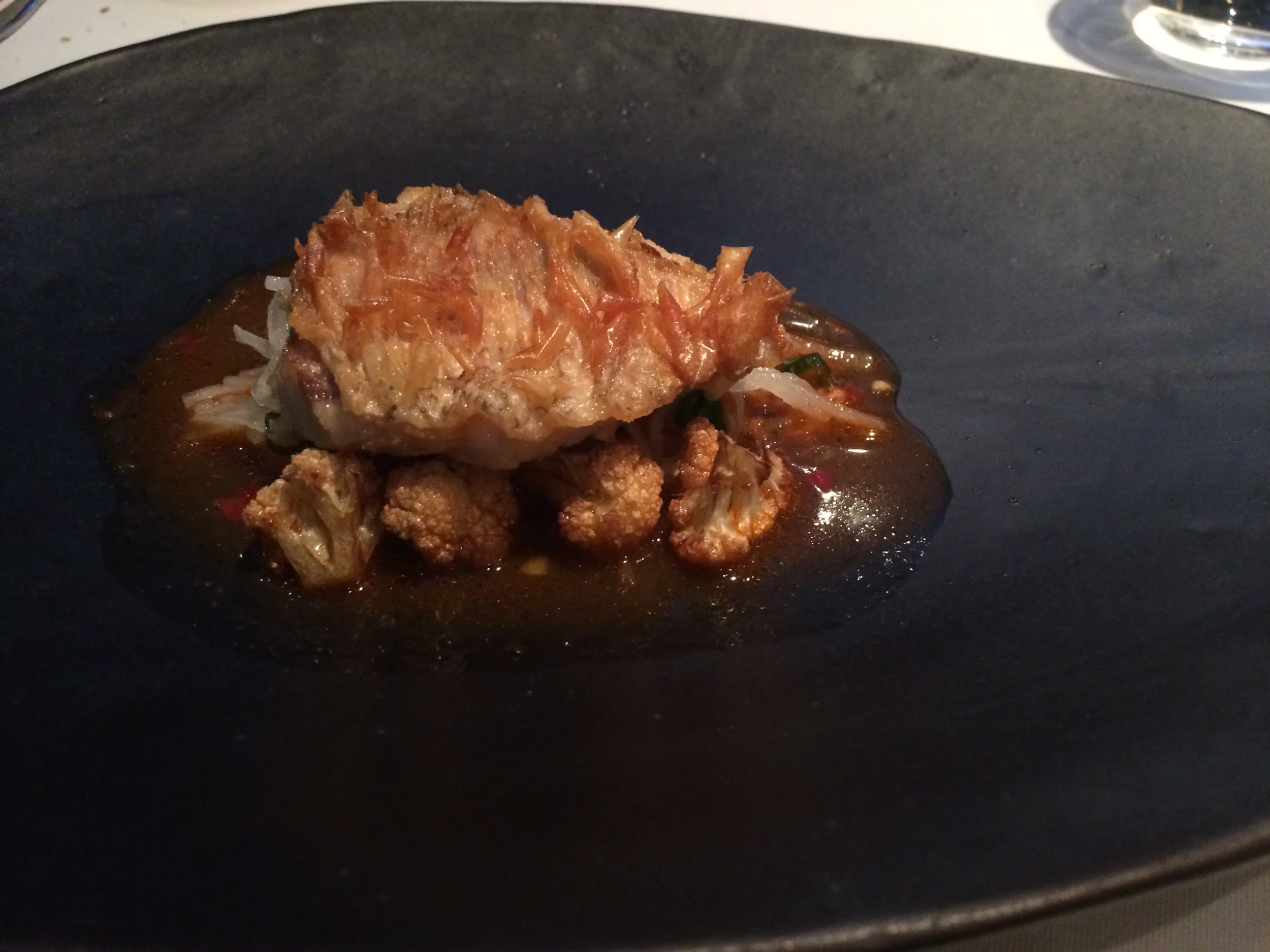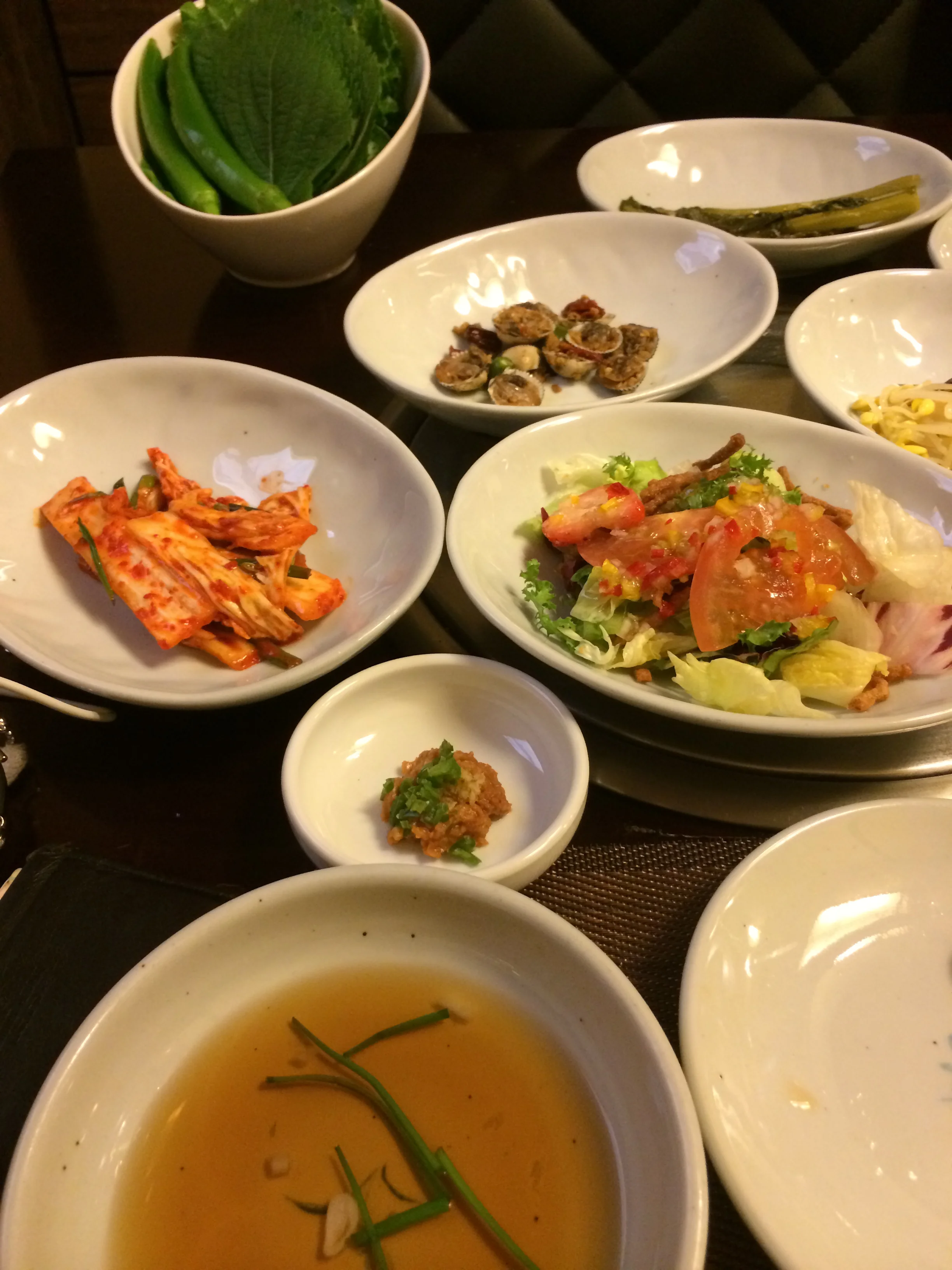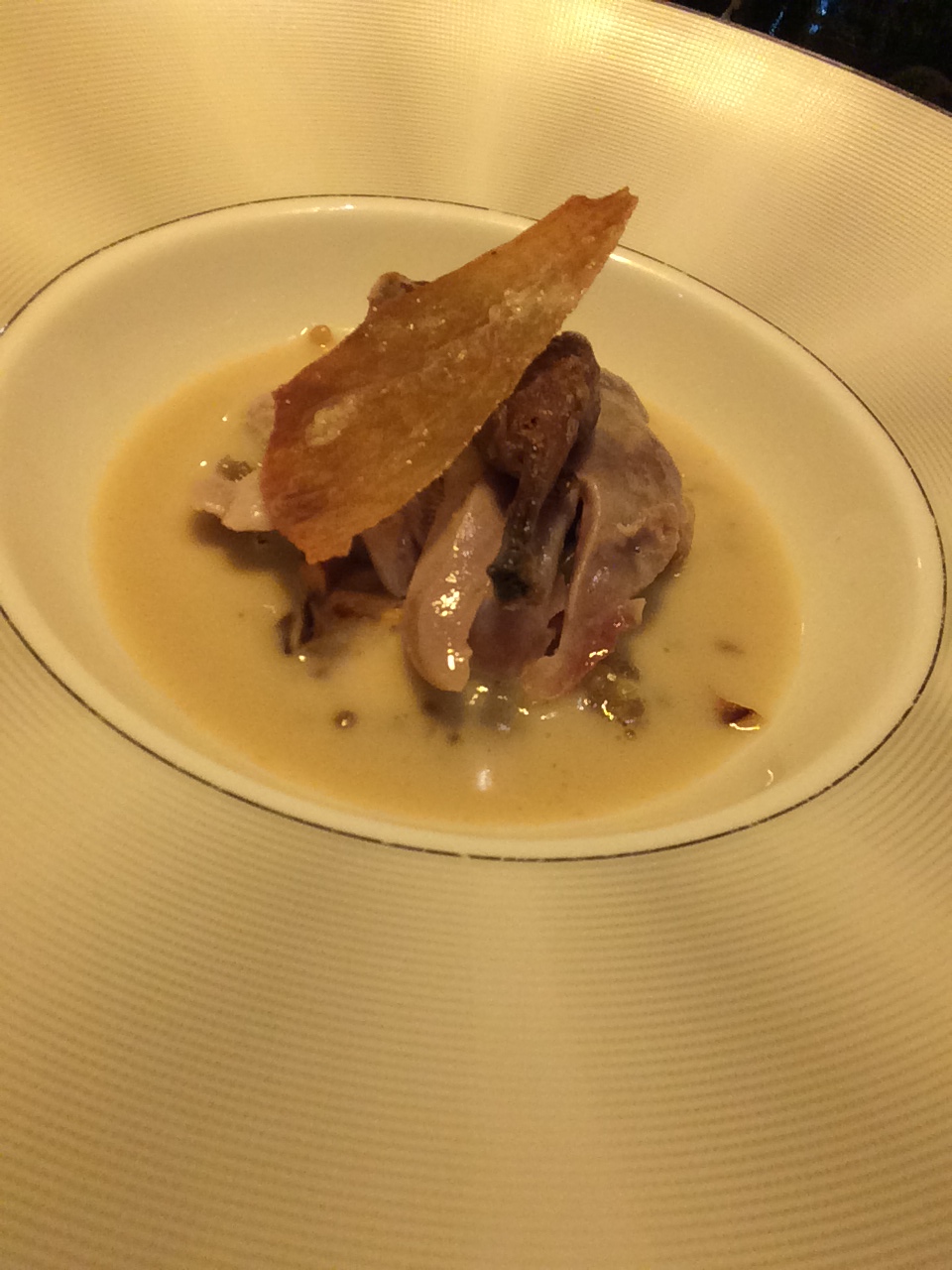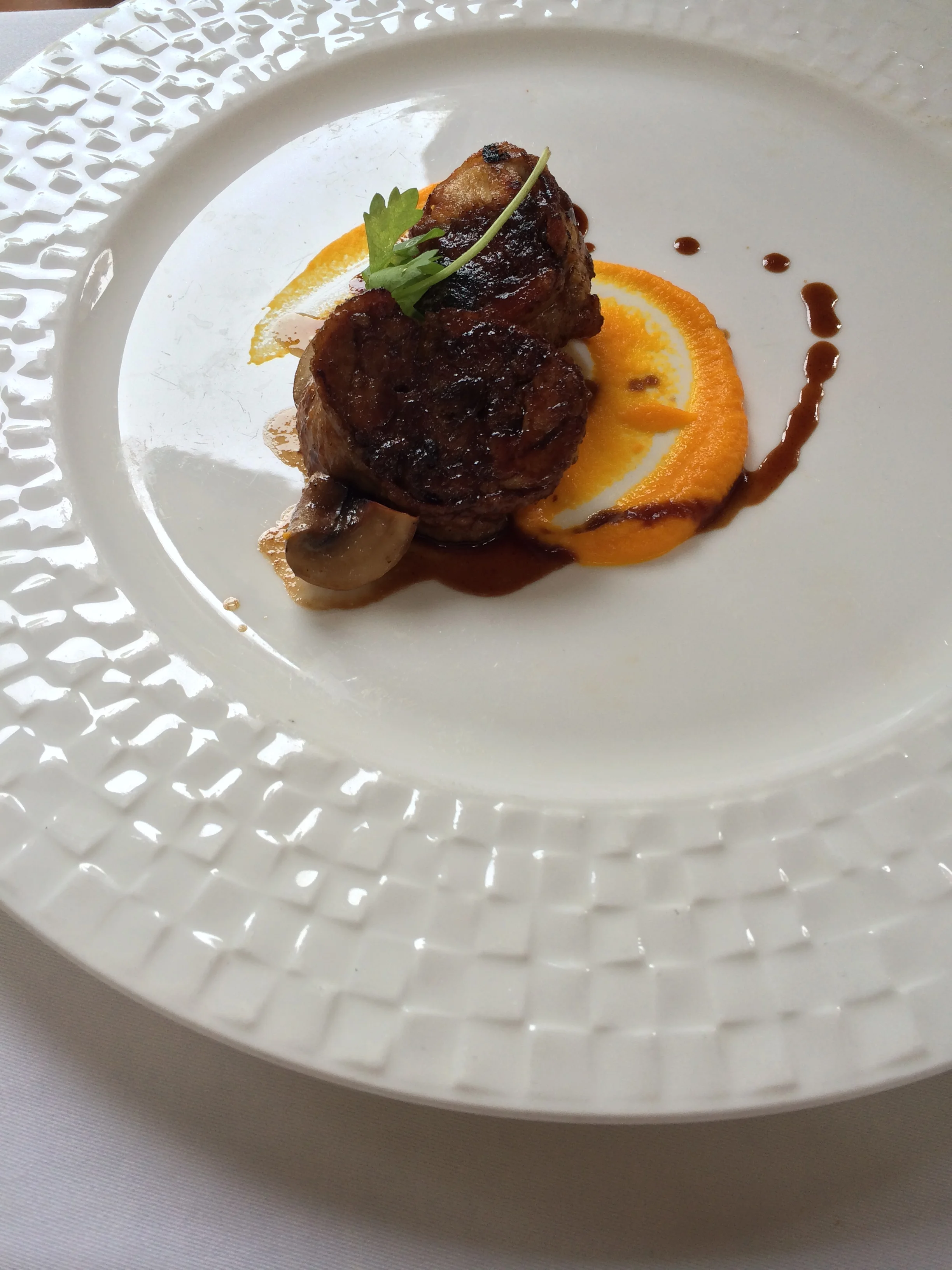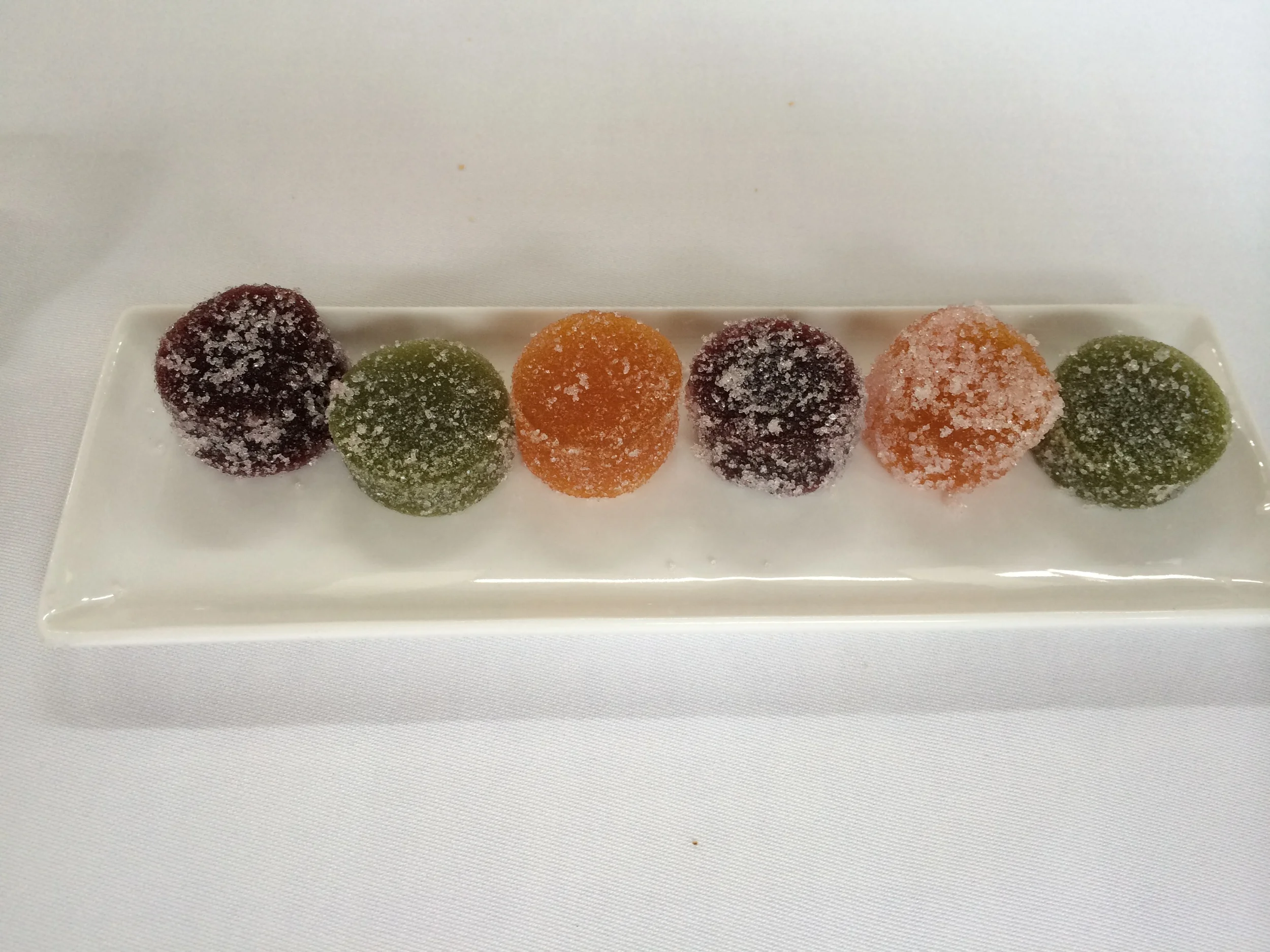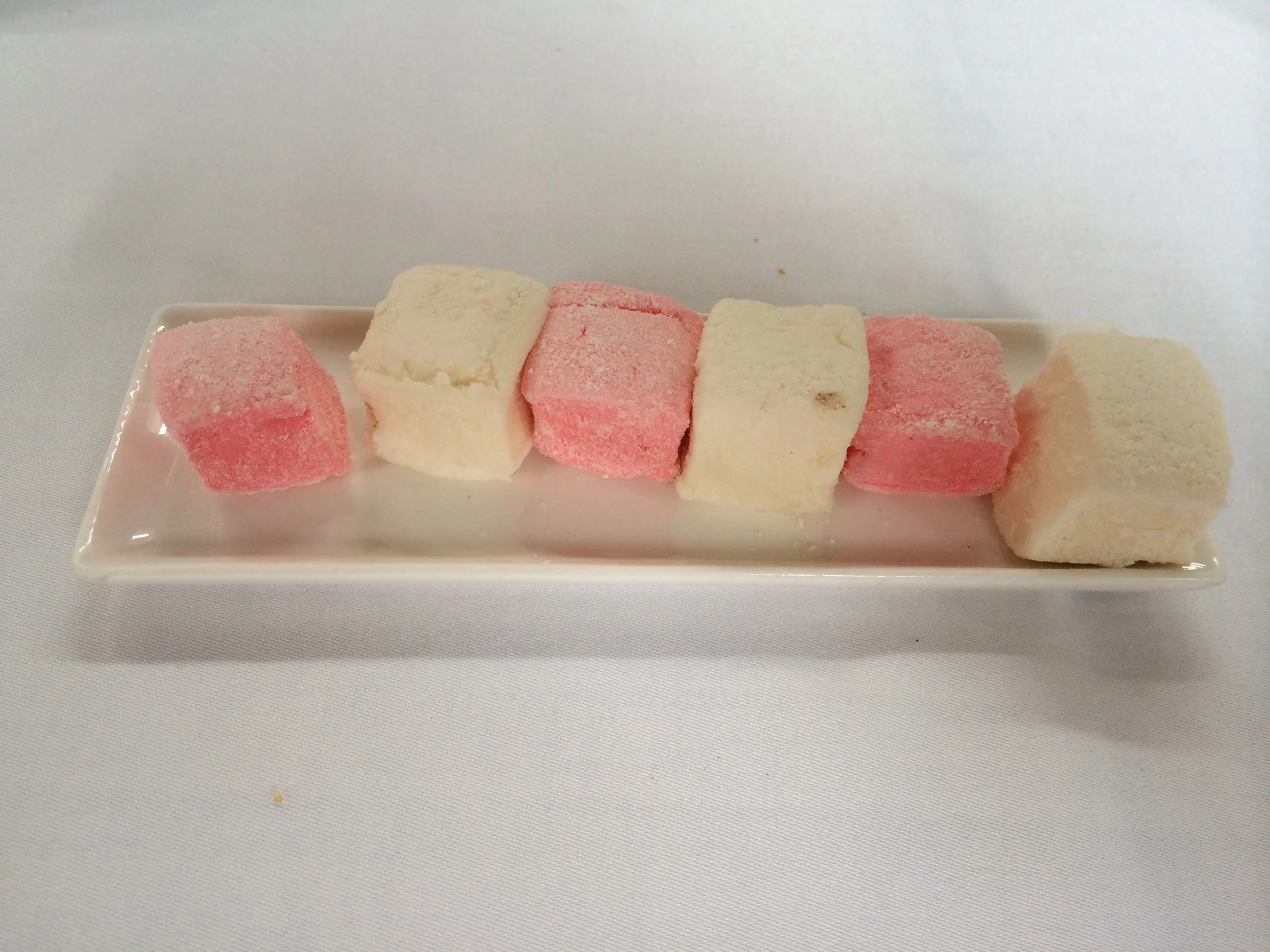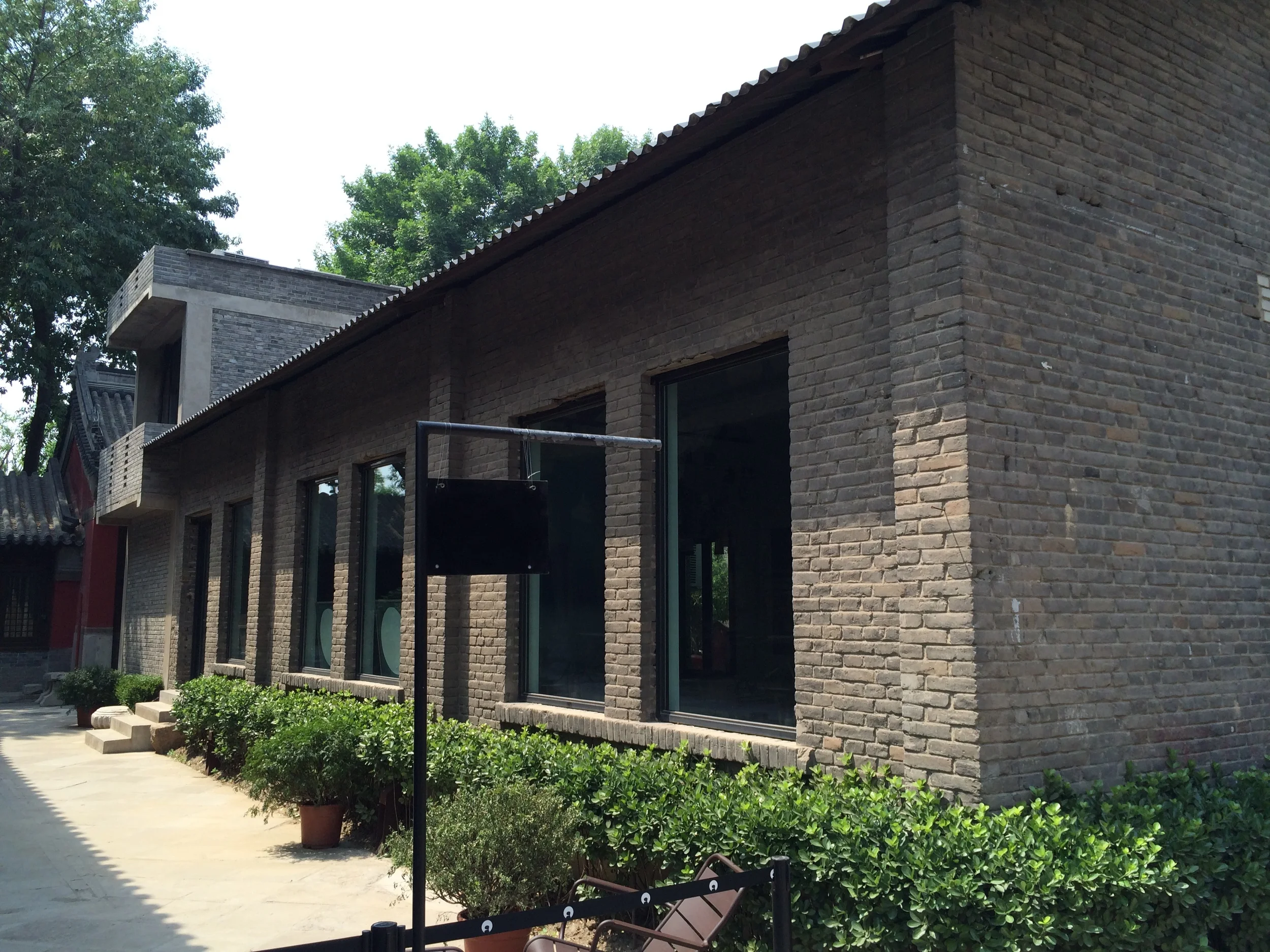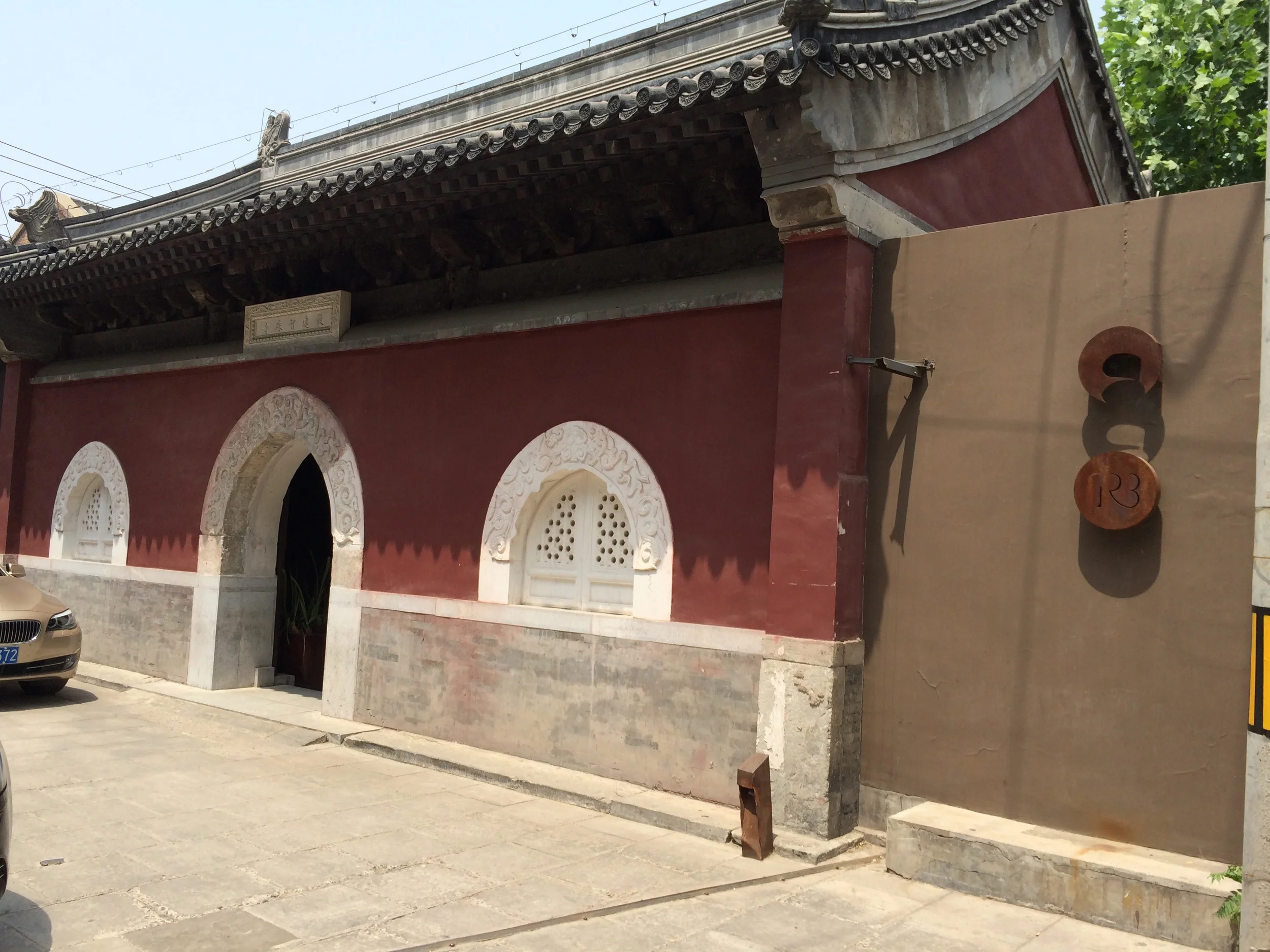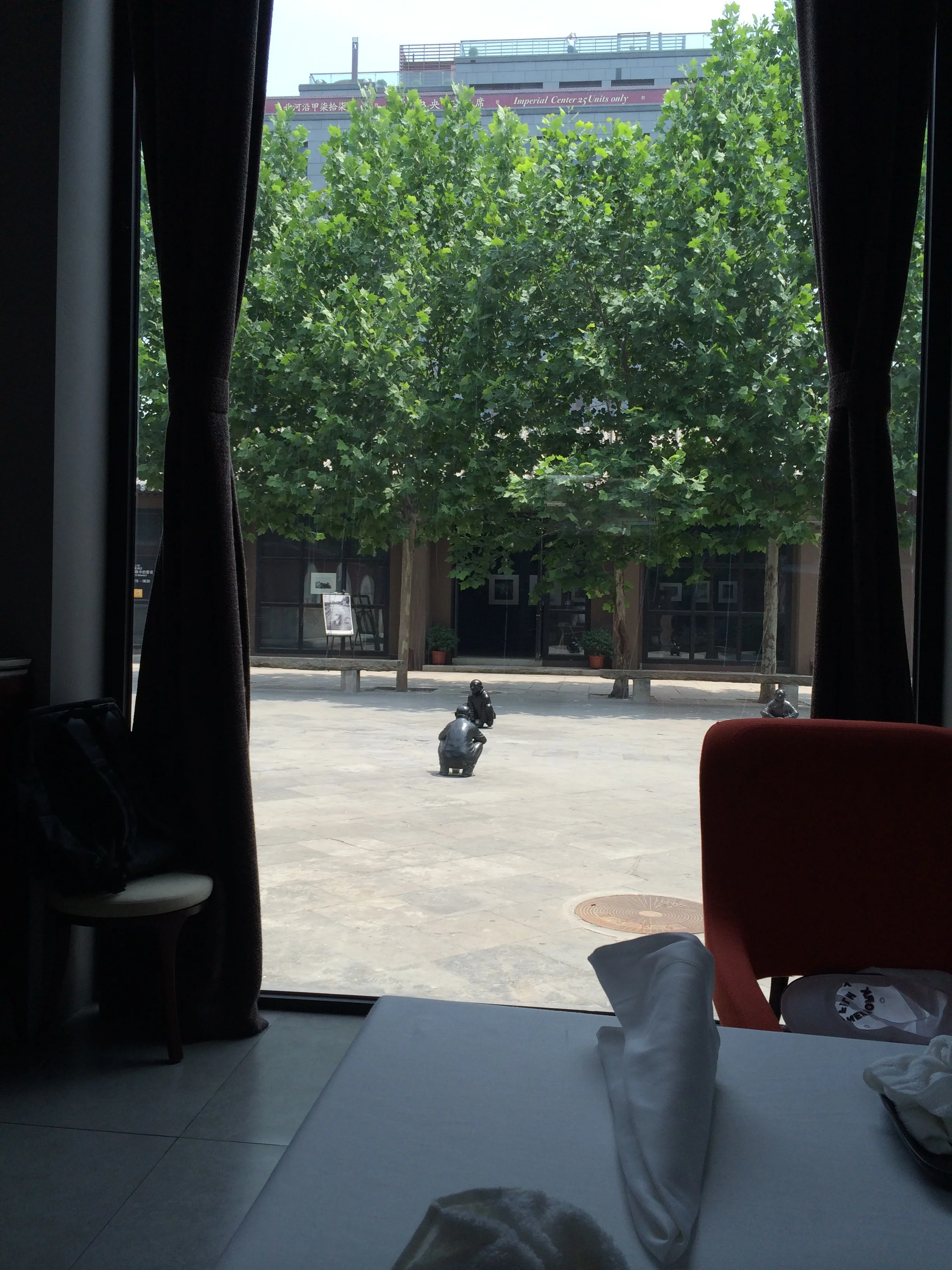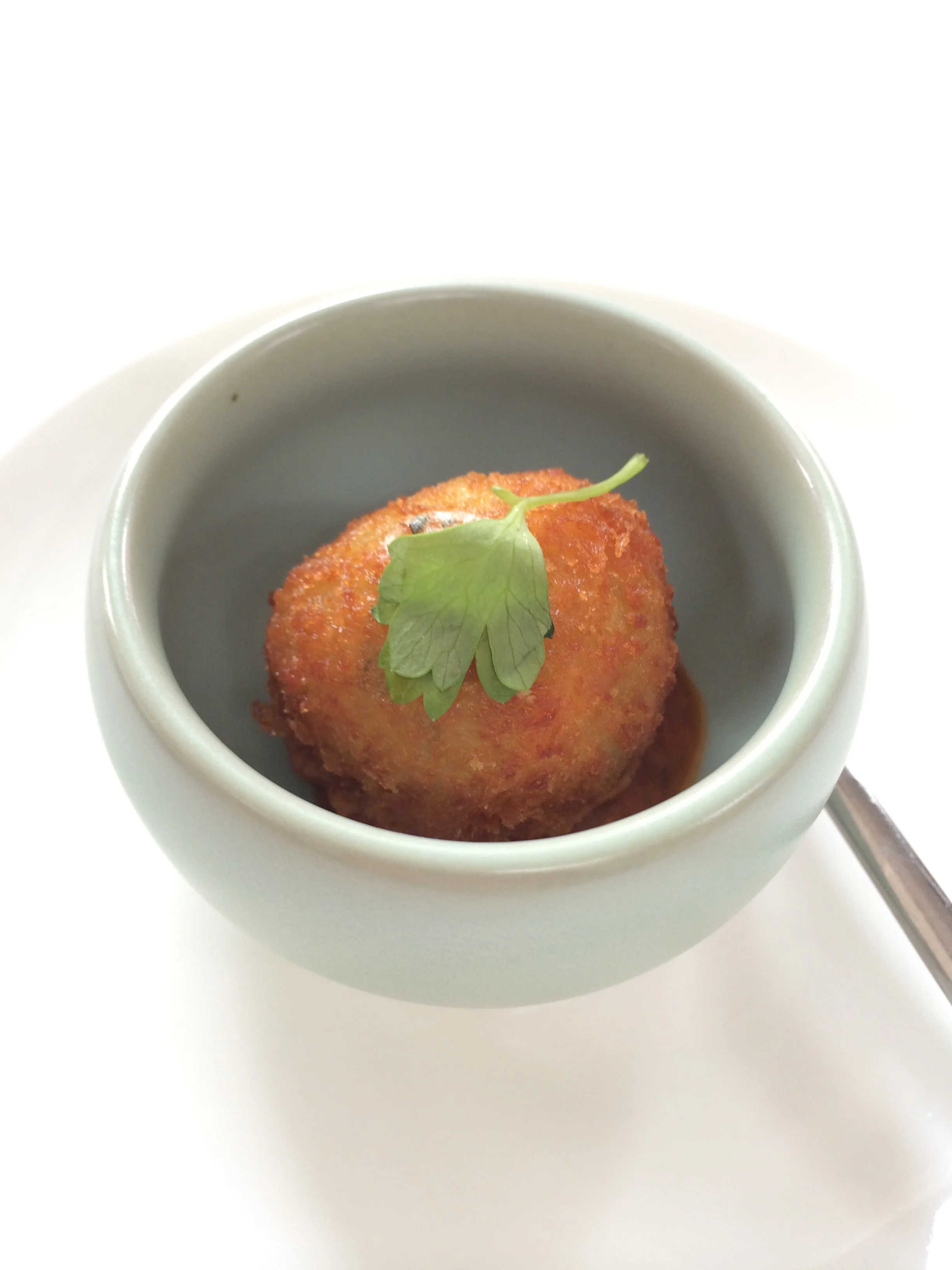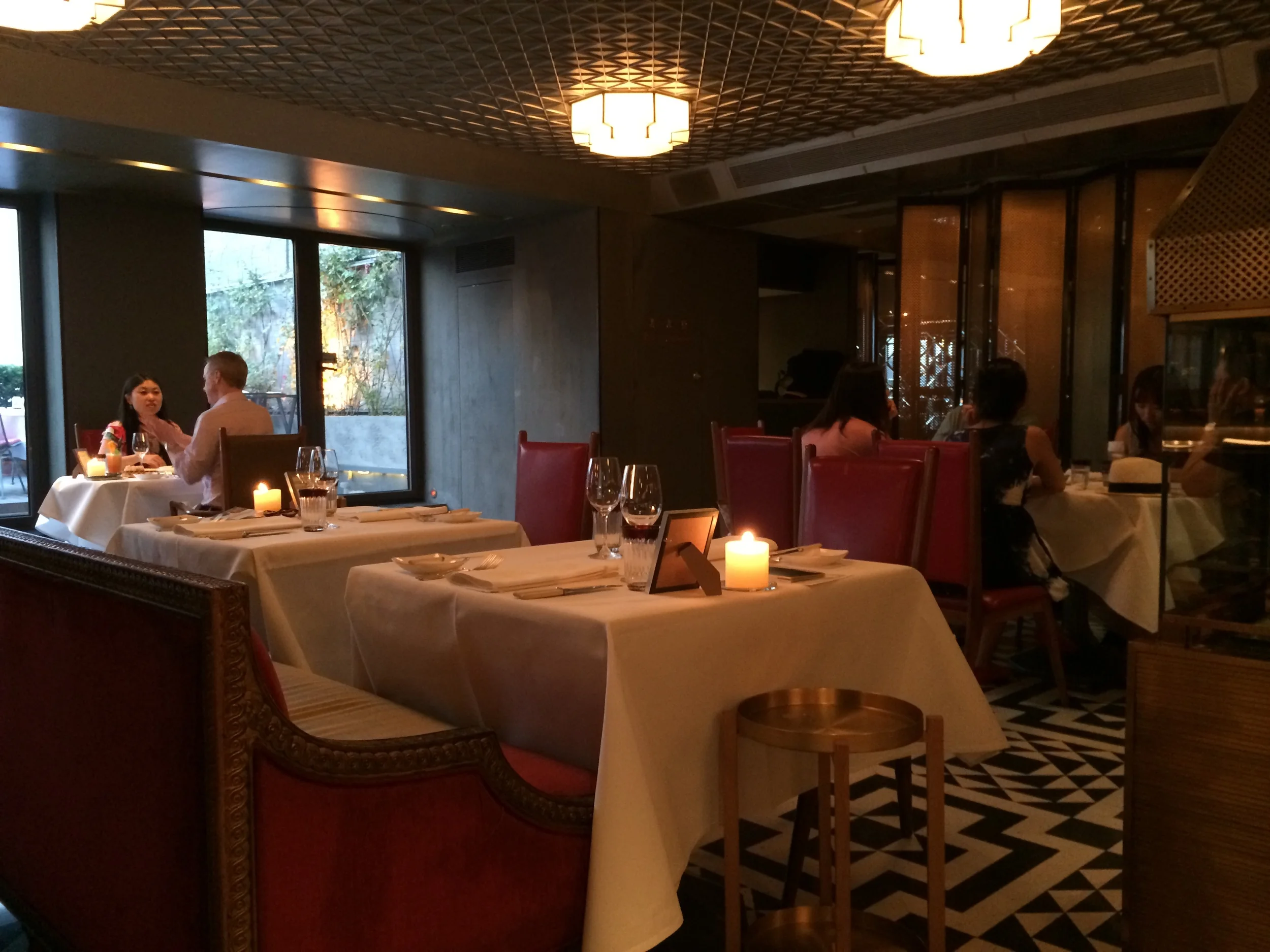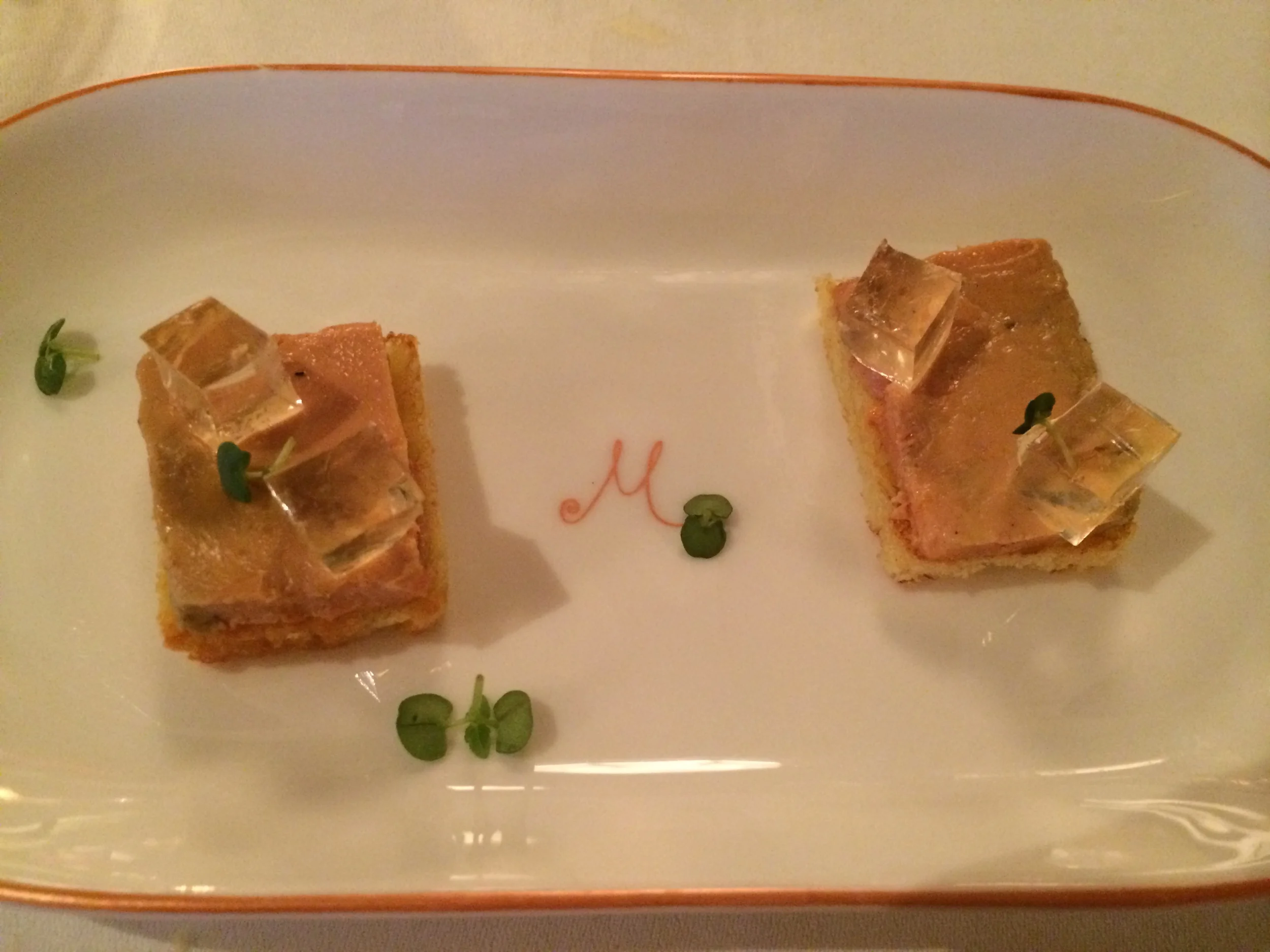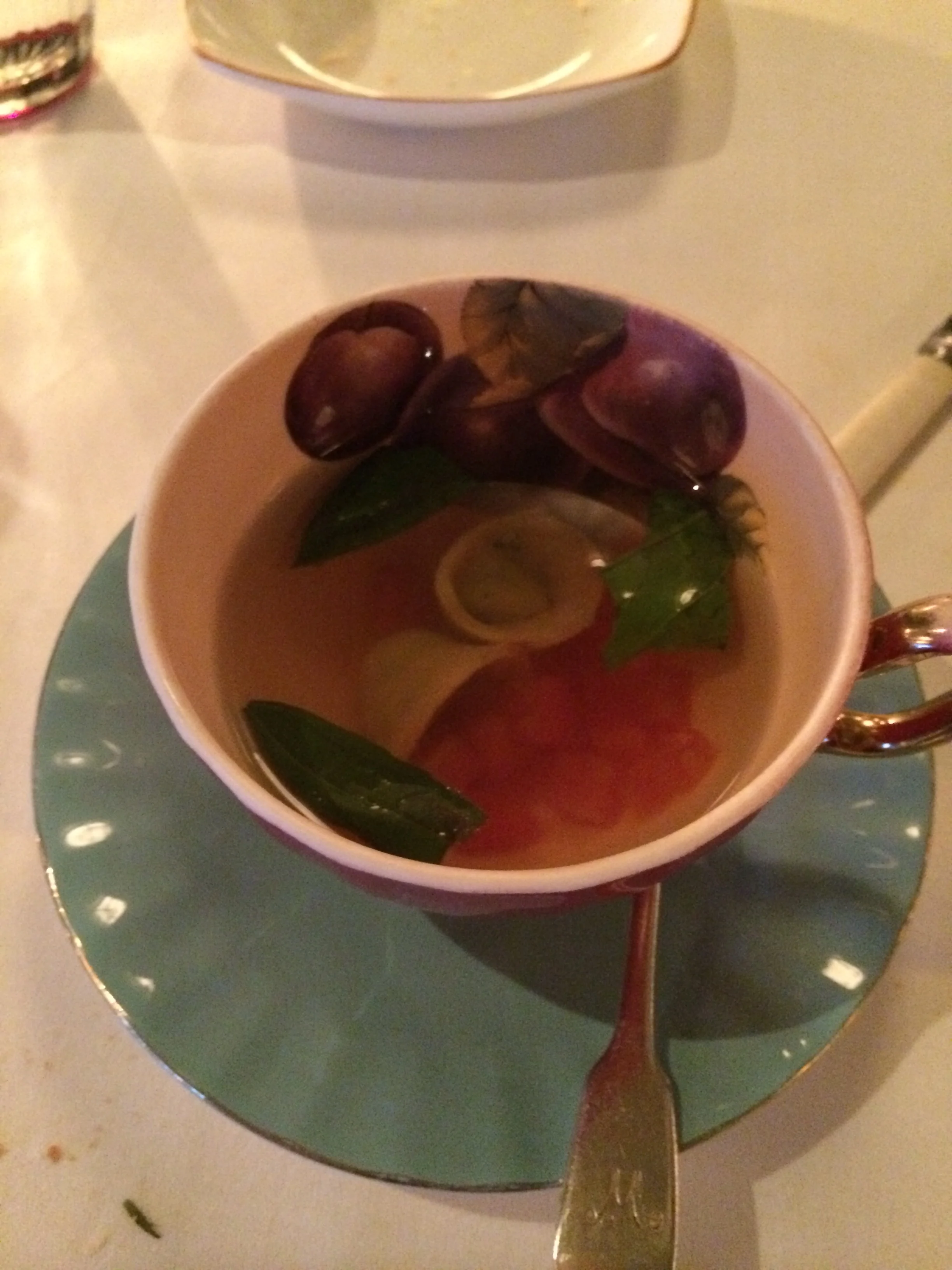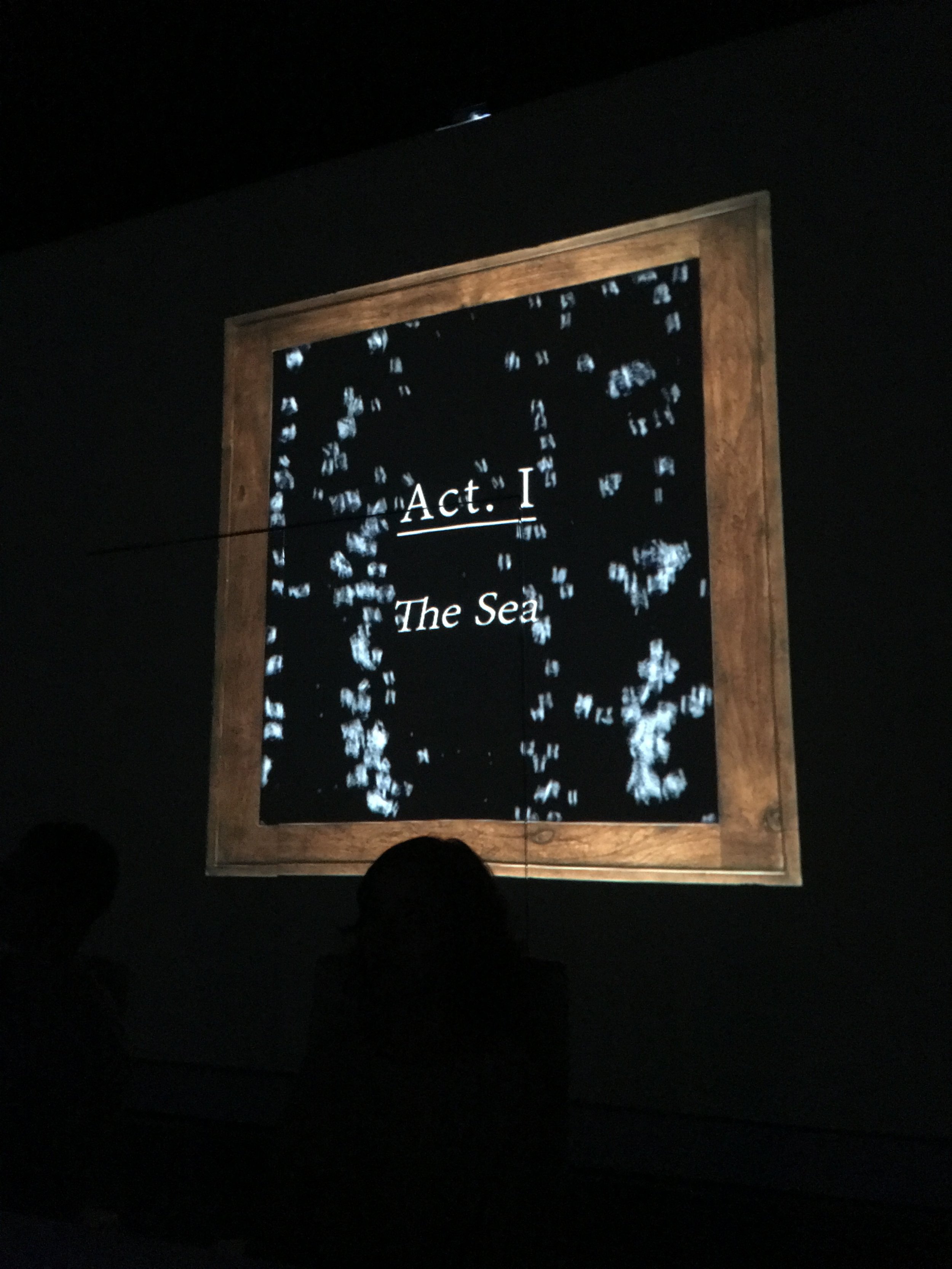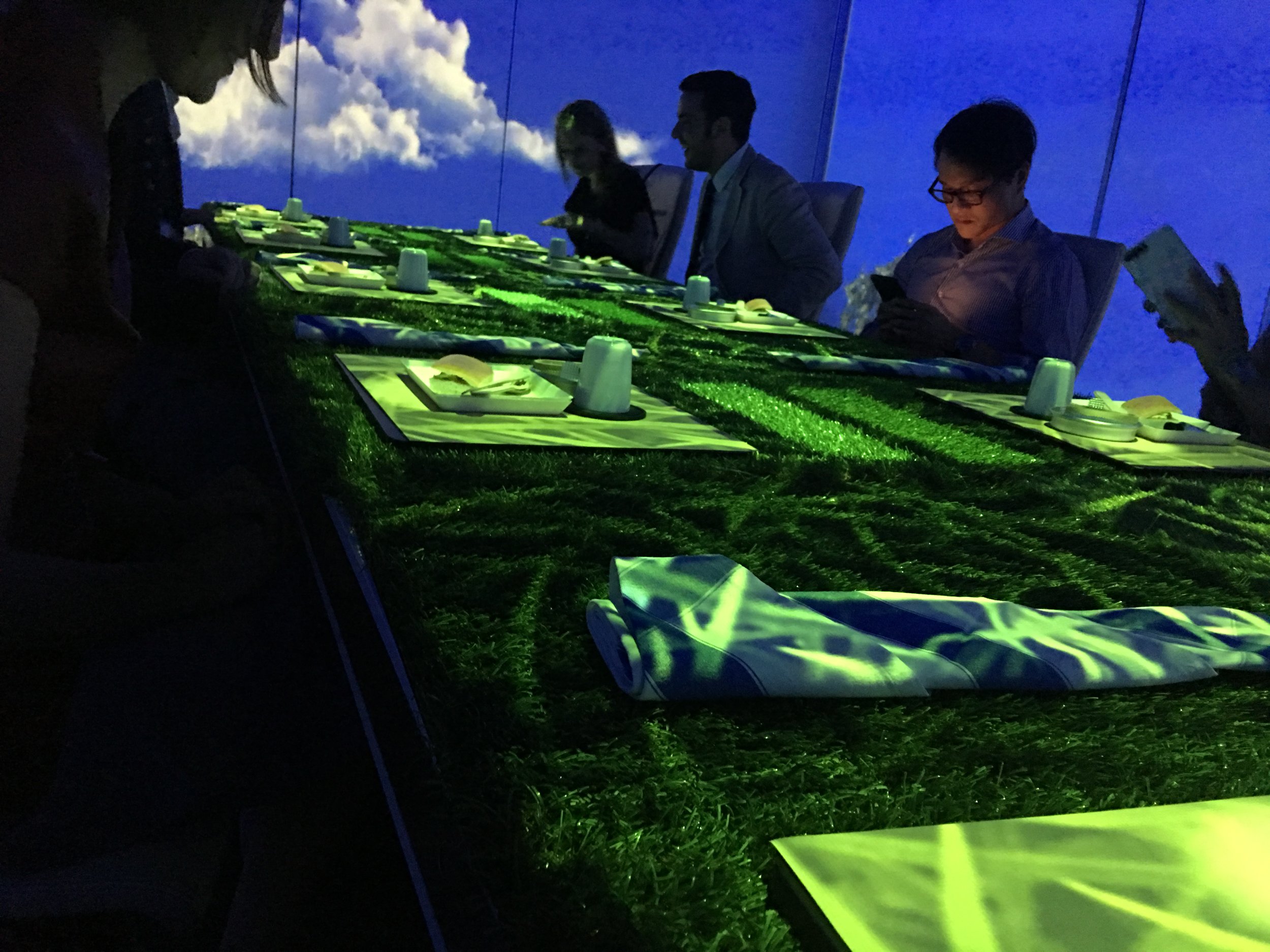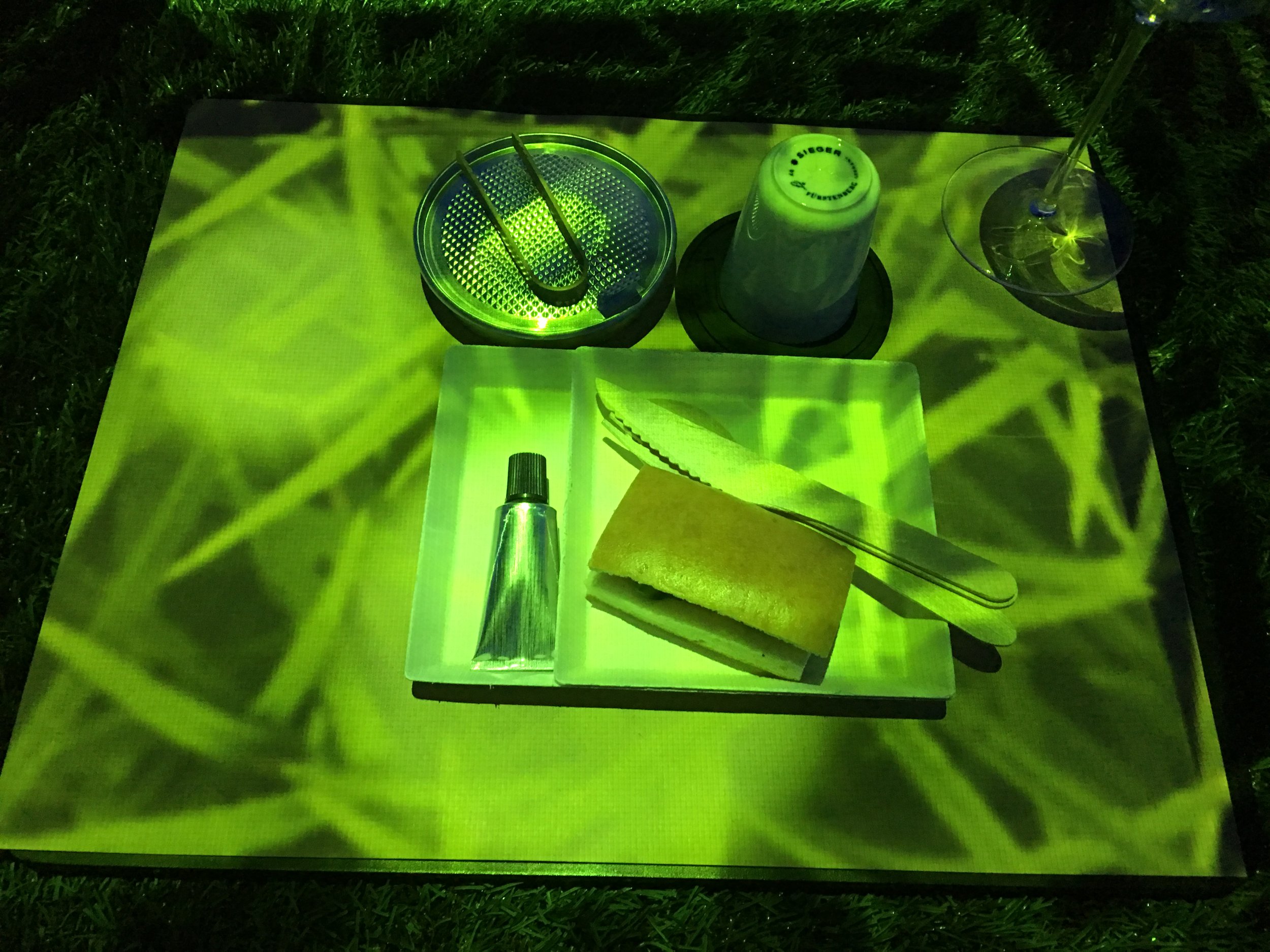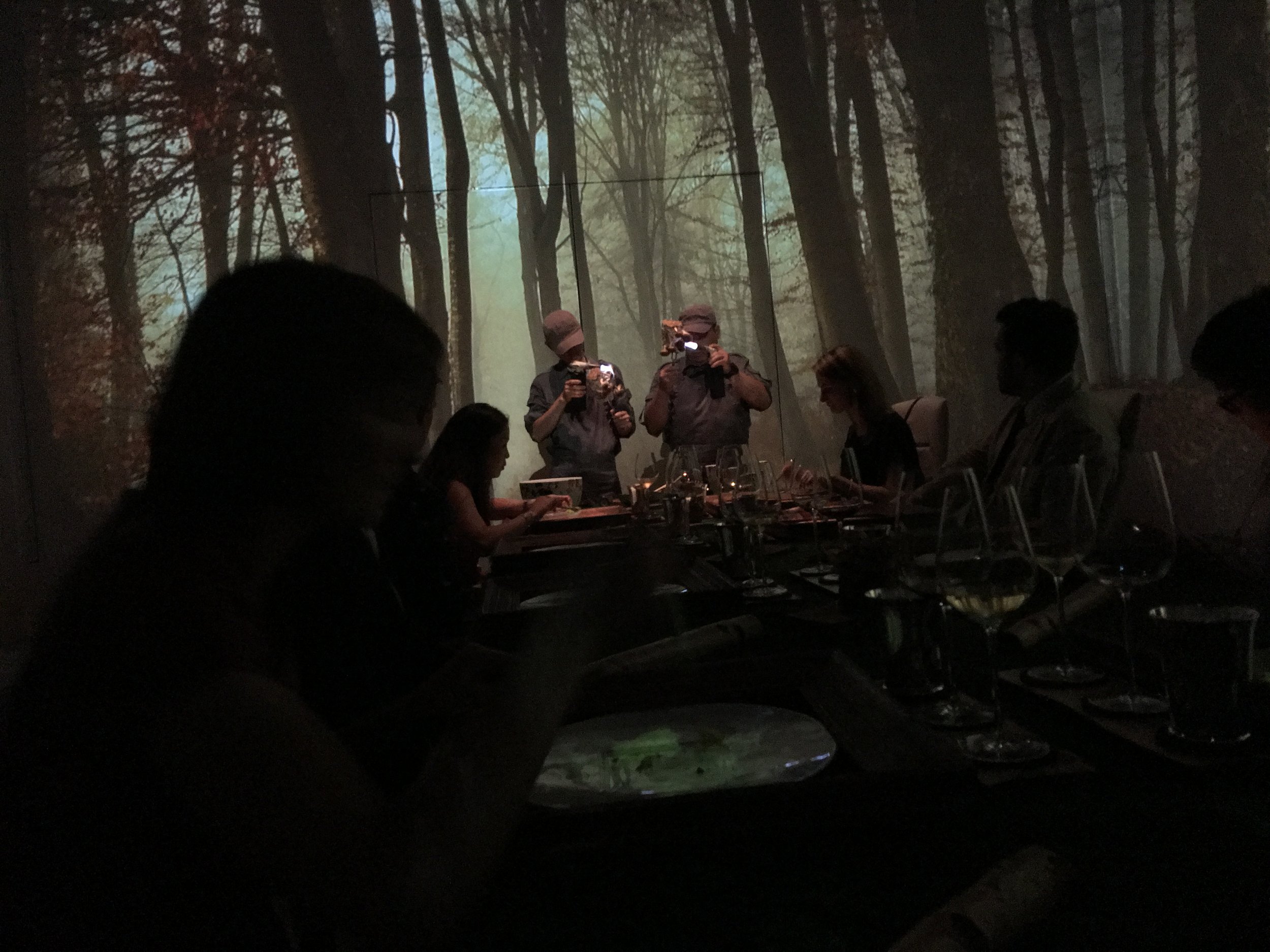But the real reason one goes to Taichung is to eat at Le Mout, a French master restaurant headed by a female chef with a stunning C.V. By Taiwan standards, it is expensive - $3500 NTD for a full course. The explanation of the name is given in the menu: “Le vin se fait à partir d’un moût. Et le rêve, il se fait à partir d’ici….” The setting is gorgeous - a three-storey restaurant with all the finishings to match any three star in France. The meal begins with a nicoise “pizza”, a little bite-size calzone that bursts in tomato flavour, and a lobster jelly. For amuse bouche, you are surprised with one of two excellent plates. The heavier one is a coffee flavoured creme-brulée that could have easily come at the end of the meal; however, it works at the start as a strong palette cleanser. The tuna tartare is more neutral in flavour - specks of dill paired with the crunchiness of toast. It is a first indication of the artistic merits of plating to be seen in the rest of the meal.
The showstopper occurs early. It is named “nature’s beauty,” a gourmet interpretation of an egg splattered against a black canvas. The height achieved by this dish is like that of the grandmasters in the Basque country: the egg whites and shell are reconstructed using edible ingredients - cream and sugar. The focal point is the egg yolk, which is real. It is a beautiful sunny orange colour, and bursts upon contact. The beautiful display seems like a waste to mess up, but the mixed result is a tasty manifestation of the chicken. In particular, a homemade granola and the just-cracked faux-egg shell soak up all the lovely juices from the egg yolk.
The “walk in the forest” continues with the sweetbread, itself looking like a bucolic area of resplendent shrubbery. The key ingredient is the shallot-leek sauce that acts as an acidic counterbalance to the fatty sweetbread. A trio of lamb comes next - some fatty belly from a farm close by, some loin and some slices mixed in a salad. The only special part was the black bean hummus, a beautiful paste that brings out the softness of the lamb loin.
The best part of the meal is the foie gras. It’s a beautifully cooked piece - crispy on the outside and mellow on the inside. However it only looks like a spectator, tipping into the pond of Chinese “Toon” (a nutty celery flavour), with edible flowers and wild mushrooms as foliage. A few more well-made courses and finally a chilled tomato soup - sweet so that it counts as dessert, paired with sweet soybean (“Doujiang”) ice cream. Excellent. The entire meal can be considered at the highest end of French cuisine and therefore of all gastronomical experiences in the world. It fulfills the three-star definition - worth a special trip to an off-the-path city in Taiwan.
Le Mout. 3500 NTD
Aperitivo [Nicoise pizza, lobster jelly]
Amuse-bouche [Coffee Creme-brulée, potato chip / Tuna tartare with toast, dill oyster sauce]
Nature's Beauty. Organic Silken Hen’s Egg, Cream of white Chicken Stew, Homemade Granola, Chicken Skin, Split Chicken Jus
Double Consummé, Roasted Mushroom and Fine Herbs
Sweetbread, Caramelized Brussel Sprouts, Sour Onion, Porcini Foam, Shallot-Leek Sauce
Duck Foie Gras “Promenade dans le Bois,” Wild Mushrooms and Toon
Halibut, Flourless Squid Ink Gnocchi, Seaweed Butter, Calamari, Thai Inspired Shellfish Fumet
Tai Tung Guan Shan Lamb Belly, New Zealand Smoked Lamb Loin, Nashi Pear, Beetroot, Fermented Black Garlic & Black Bean Hummus, Warm Rice Salad
Éclair de Bleu d’Auvergne, Sweet Bordelaise Sauce and Hazelnut Butter
Tomato, White Coco Bean and Black Sugar
Mignardise
